

gourmet buns for Gourmet Burgers check out our premium bun range inside NO.796 JULY 2023


Via Distributor Potato Bun 4.5" (code 9108) Milk Bun 4.5" (code 9128) Brioche Style Bun 4.5" (code 9295) (6 months frozen shelf life) Direct Delivery Potato Bun 4.5" (CODE 2012) Milk Bun 4.5" (code 2010) Brioche Style Bun 4.5" (code 2011) (5 day shelf life) TM Milk BUn 4.5" POTATO BUn 4.5" brioche style bun 4.5" TO FIND OUT MORE OR TO ORDER VIA DISTRIBUTOR OR DIRECT DELIVERY, VISIT TIPTOP-FOODSERVICE.COM.AU Scan for more info on Tip Top’s premium burger bun range Soft creamy texture, with real milk Our softest bun ever Lightly glazed, sweet bun ✓ pre-sliced buns ✓ available nationally


NO.796 JULY 2023 SUNDAY LUNCH | VIAND’S ANNITA POTTER | SGROPPINO | LATE-NIGHT MENUS
Regulars
8 // IN FOCUS
Three venues on making Sunday lunch the new go-to dining time.

14 // NEWS
The latest openings, books, events, and more.
16 // DISH ANATOMY
Everything you need to know about gildas, the OG pintxo.
18 // RECIPE
Hamish Ingham from Redbird shares his recipe for prawn toast.
Contents
JULY 2023
19 // BAR CART
Thirst quenchers, slow sippers, and all things beverage related.
22 // DRINKS
Discover the sgroppino — the notcocktail, not-dessert.
28 // PROFILE
Chef Annita Potter on working with David Thompson and launching her Sydney restaurant Viand.
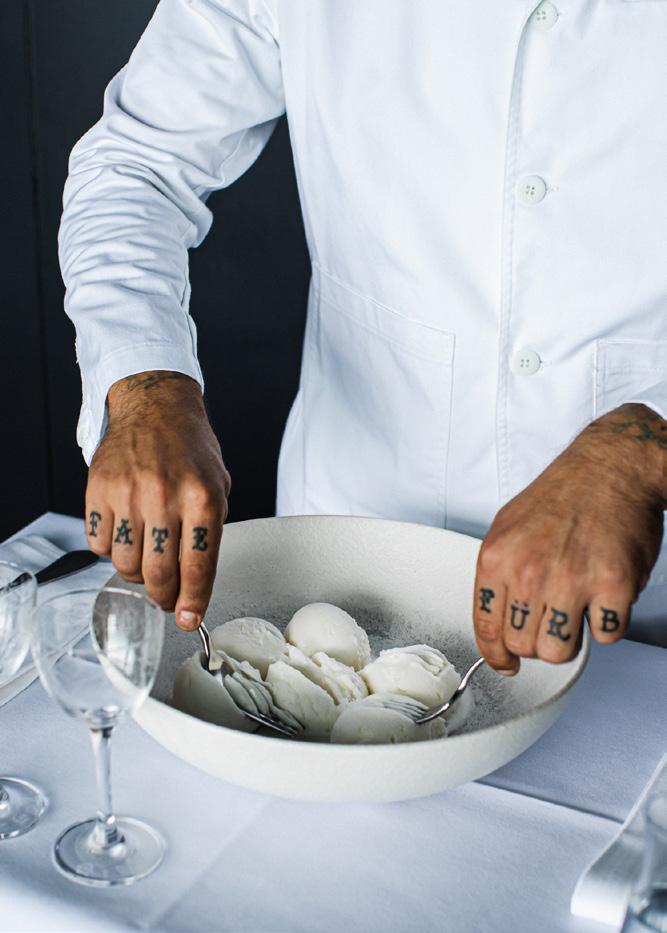
58 // 5 MINUTES WITH … José Saulog from Parlar, Franca, and Armorica.
Features
40 // POOLSIDE DINING
It’s a balancing act when it comes to poolside food offerings.
46 // CRÊPES SUZETTE
Two chefs share how they serve up the staple French dessert.
54 // LATE-NIGHT MENUS
Why more venues are keeping the kitchen open after hours.

4 | Hospitality
22 28 54 CONTENTS // July

COMMERCIAL ICE MAKERS | REFRIGERATION DURABLE RELIABLE AUTHENTIC hoshizaki.com.au
A note from the editor
31 JULY MARKS the return of the Hospitality Leaders Summit to Melbourne. It’s the second year Hospitality has hosted the annual event in the city, and it couldn’t be a better time to come together with the way the industry is tracking. If you haven’t already purchased your ticket, head over to hospleaders.com.au and secure your spot to hear from more than 20 speakers who will be covering the everimportant topics of attracting and retaining staff, sustainability, technology, what trends you should consider investing in, and much more. See you there!
PUBLISHER Paul Wootton pwootton@intermedia.com.au
EDITOR
Annabelle Cloros
T: 02 8586 6226 acloros@intermedia.com.au
DEPUTY EDITOR Amy Northcott anorthcott@intermedia.com.au
DISCLAIMER
Our July issue is a bumper edition — we profile Sydney-based chef Annita Potter from Viand, look at late-night offerings that are taking inspiration from global cities (hello, New York), go poolside with culinary talents creating bespoke menus for guests enjoying an enviable lazy day in the sun, and delve into the sgroppino with the alwaysiconic Icebergs in Bondi. I hope you enjoy this issue.
Until next time,
Annabelle Cloros Managing Editor

ADVERTISING NATIONAL Simon York
T: 02 8586 6163 F: 02 9660 4419 syork@intermedia.com.au
GROUP ART DIRECTOR –LIQUOR AND HOSPITALITY Kea Thorburn kthorburn@intermedia.com.au
PRODUCTION MANAGER Jacqui Cooper jacqui@intermedia.com.au
CIRCULATIONS
To subscribe please call 1800 651 422.
hospitalitymag azine.com.au facebook.com/ HospitalityMagazine twitter.com/Hospitalityed instagram.com/hospitalitymag
Keep
GOOD TIMES
Delia Group’s Maha is celebrating 15 years in Melbourne with a best-of menu this month. @hospitalitymagazine
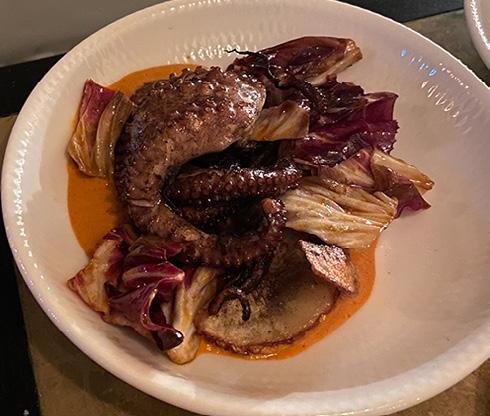

SWILLHOUSE’S LATEST
A classic steak tartare at new opening Le Foote. @annabellecloros

TAPAS TIME
Follow us
@hospitalitymagazine #hospitalitymagazine
SUBSCRIPTION RATES
Australia:
1 year (10 issues) = $99.00 (inc GST)
2 years (20 issues) = $158.40 (inc GST) – Save 20%
3 years (30 issues) = $207.90 (inc GST) – Save 30%
SUBSCRIPTION RATES
New Zealand:
1 year (10 issues) = $109.00
Asia/Pacific
1 year (10 issues) = $119.00
Rest of World:
1 year (10 issues) = $129.00
This publication is published by Food and Beverage Media, a division of The Intermedia Group Pty Ltd (the “Publisher”). Materials in this publication have been created by a variety of different entities and, to the extent permitted by law, the Publisher accepts no liability for materials created by others. All materials should be considered protected by Australian and international intellectual property laws. Unless you are authorised by law or the copyright owner to do so, you may not copy any of the materials. The mention of a product or service, person or company in this publication does not indicate the Publisher’s endorsement. The views expressed in this publication do not necessarily represent the opinion of the Publisher, its agents, company officers or employees. Any use of the information contained in this publication is at the sole risk of the person using that information. The user should make independent enquiries as to the accuracy of the information before relying on that information. All express or implied terms, conditions, warranties, statements, assurances and representations in relation to the Publisher, its publications and its services are expressly excluded save for those conditions and warranties which must be implied under the laws of any State of Australia or the provisions of Division 2 of Part V of the Trade Practices Act 1974 and any statutory modification or re-enactment thereof. To the extent permitted by law, the Publisher will not be liable for any damages including special, exemplary, punitive or consequential damages (including but not limited to economic loss or loss of profit or revenue or loss of opportunity) or indirect loss or damage of any kind arising in contract, tort or otherwise, even if advised of the possibility of such loss of profits or damages. While we use our best endeavours to ensure accuracy of the materials we create, to the extent permitted by law, the Publisher excludes all liability for loss resulting from any inaccuracies or false or misleading statements that may appear in this publication. Copyright © 2023 – The Intermedia Group Pty Ltd
41 Bridge
6 | Hospitality
02
2113
Road Glebe NSW 2037 Australia Tel:
9660
Fax: 02 9660 4419
Social
Average Net Distribution Period ending September 2019 – 11,506
Bar Lucia’s barbecued octopus with black olive and red capsicum sauce. @_amynorthcott up with the Hospitality team EDITOR ’ S NOTE // Hello
Grana Padano, handcrafted in Italy with the same passion since 1135, is the world’s most consumed P.D.O* cheese.
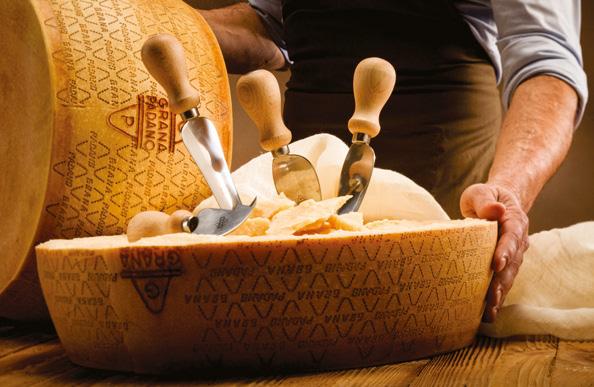
The taste of excellence.
Only those wheels that pass rigorous testing by the experts of the Grana Padano Protection Consortium are fire-branded with the Grana Padano Logo and are awarded the Protected Designation of Origin.

The flavour of goodness.
1 kg of Grana Padano P.D.O. contains all the nutritional qualities of 15 litres of milk, making it ideal for a well-balanced diet.



Quality vintages.
Grana Padano P.D.O is available in 3 different vintages:

- From 9 to 16 months: mild and delicate flavour, ideal as an aperitif.
- Over 16 months: more distinct and robust flavour, without losing its mildness.

-“RISERVA”, over 20 months: intense and fragrant aroma; the highest quality. A connoisseur’s cheese.
*P.D.O.: Protected Designation of Origin

TORP• E CTEDDESIGNATIONOFO •NIGIR Exclusively distributed by Conga Foods since 1978. For your nearest stockist: congafoods.com.au
Consorzio Tutela Grana Padano
Let’s do lunch
Sunday lunch is back in a big way.

WORDS Annabelle Cloros
PHOTOGRAPHY Yusuke Oba for The Old Fitz
WINTER IS A notoriously slow season for restaurants as many patrons choose to stay in and avoid the elements at night. But we’re calling it — Sunday lunch is going to be big this year. Venues are fast launching menus that combine comfort and familiarity with a boundary push. Hospitality looks at three new offerings in Sydney packaging up dining experiences made for the daylight hours.
The Charles Grand Brasserie
The Charles Grand Brasserie has one of the most luxurious dining rooms in the city. Perhaps it’s the white tablecloths, the architectural chandeliers that hang above them, or the leather banquettes — no matter your design proclivity, it’s a beautiful space to spend time in. Executive Chef Billy Hannigan spearheads the Etymon Projects venue and is renowned for his classic approach to cooking thanks to a decade spent working alongside Brett Graham at The Ledbury in London. There’s no doubt the dining scene has been swept up by the brasserie movement, and The Charles has played a key role in the city’s renewed affinity for dining.
While the restaurant has always run lunch service, this year sees the launch of something different — La Grande Choucroute Royale. The concept is based on a rustic dish served across brasseries in
Europe, which sees sauerkraut teamed with sausages and ham. Hannigan has upped the stakes with a fine-dining iteration available from 12pm each Sunday priced at $80 per person. Pre-orders must be submitted 48 hours before guests arrive, with accommodations for the meal considered but not guaranteed. The experience sees the table filled with aged pork cutlet; smoked and glazed pork hock; Morteau sausage; Strasbourg sausage; sauerkraut; steamed cocktail potatoes; green velvet lettuce with honey vinaigrette; seeded mustard; and a jug of pork jus. The meal is best accompanied by a glass of Riesling — take your pick from 30 options.
The Old Fitz
Woolloomooloo institution The Old Fitz has been under the care of Odd Culture Group for a while now, and the venue has recently unveiled a raft of new dishes from Executive Chef James MacDonald, who’s channelling all things French and British at the pub. MacDonald’s career has seen him work in the kitchens of Andrew McConnell’s Luxembourg as well as Restaurant Hubert, so you know it’s going to be good. “It feels right to lean into French-inspired cuisine and create a refined menu focused on comfort and long-established favourites,” says the chef. “It ties in so well with the pub’s charm, warmth, and homeliness.”
IN FOCUS // Sunday lunch
8 | Hospitality
The pub has launched a dedicated Sunday menu accompanied by live jazz in the afternoon. There’s a selection of share plates available for patrons to fill their tables with including oysters, duck croquette, duck liver pâté, steak tartare, and pomme Anna with tarama and anchovy.

MacDonald has gone all out on the Old Fitz Roast menu that lists three options: beef striploin, slowroasted Japanese squash, and chicken Maryland, which are all served with roast potatoes, carrots, greens, gravy, and an all-important Yorkshire pudding. The chef hasn’t skipped over dessert, presenting a short but sharp offering of crème caramel, rum baba with Chantilly cream, and a selection of cheeses.
Woodcut
Sunny and Ross Lusted’s Crown Sydney establishment Woodcut is a newcomer to the brunch game, launching an offering for the very first time. “We have spent a lot of time in NYC and always enjoyed the city on Sundays and how New Yorkers embrace dining out on sunny sidewalks for brunch,” says Ross. “Some of the best restaurants change gears on Sundays and offer a relaxed shared dining experience with great cocktails, and this is what we want to bring to Sydney.”
The shared menu is available from 11:00am–2:30pm on Sundays and is priced at $95 per


July 2023 | 9 IN FOCUS // Sunday lunch
“Some of the best restaurants change gears on Sundays and offer a relaxed shared dining experience with great cocktails.” – Ross Lusted
person, with the kitchen team putting together a separate offering of optional add-ons covering N25 caviar, crab cakes, Sydney Rock oysters, and pepper steak with whipped potato and pink pepper sauce to name a few. The team decided to go with a set menu format over à la carte to foster interactive dining.
“Sharing is a big part of the Woodcut experience, and it makes for a fun, informal catch up with friends where we have made the hard decisions,” says Ross. “I love brunch and the variety of dishes that work for this dining time, so for me it starts with a Bloody Mary and something savoury ... tartines are reminiscent of my travels in France, oysters with spicy sausages, and great Australian seafood.”
Woodcut’s preferred culinary technique sees chefs spend plenty of time behind the grill, and the dishes on the brunch menu stick to the memo. “Cooking with fire is central to the Woodcut kitchens,” says Ross. “Working with the team on new and exciting dishes has allowed us to embrace slow-cooked wood oven egg dishes from Europe as well as sweet and savoury treats from the pastry kitchen.”


Pineapple is ash grilled and teamed with fresh curd and pomegranate; eggs are wood oven-baked with za’atar and buttered pine nuts, and bread is woodfired and served with cultured butter and red gum smoked salt. There’s also a hempseed fried prawn sando with caper dressing and rocket, baked custard with prunes and burnt sugar, and a bread and butter pudding with grilled blueberries and hot custard. “We end with eclairs, Madeleines, and lemon curd — Sundays never looked so good,” says the chef.
A roving bubbles trolley makes its way around the dining room and is decked out with NV Charles Heidsieck’s Brut Reserve and Blanc de Blancs as well as a 2008 Charles Heidsieck Rose that can be enjoyed as is or paired with cassis, peach nectar, rhubarb nectar, or orange juice. Classic brunch cocktails — think a Bloody Mary, a French 75, and a mojito — are also listed alongside alcohol-free options. Lunch is served. ■
IN FOCUS // Sunday lunch
10 | Hospitality
“It feels right to lean into French-inspired cuisine and create a refined menu focused on comfort and longestablished favourites.”
– James MacDonald



www.nestleprofessional.com.au/brandeddesserts Bring them in
Entrée
The latest openings, books, events, and more.
EDITED BY Amy Northcott
Clayton Wells joins Public as group creative culinary director
Sydney-based chef Clayton Wells has taken on a new role with Public hospitality group after closing his restaurant Automata. Wells is working across Public’s talent acquisition and food offerings of the group’s 20-venue portfolio including a yetto-be-named venue in Bondi. “Coming up with new menus, invigorating existing restaurants and staff, and starting from scratch for the vision of the rare properties in Public’s portfolio made this an obvious choice for my next challenge,” says the newly minted group creative culinary director.


Photography by Nikki To
Something sweet
The Chocolate Spoon: Italian Sweets from the Silver Spoon
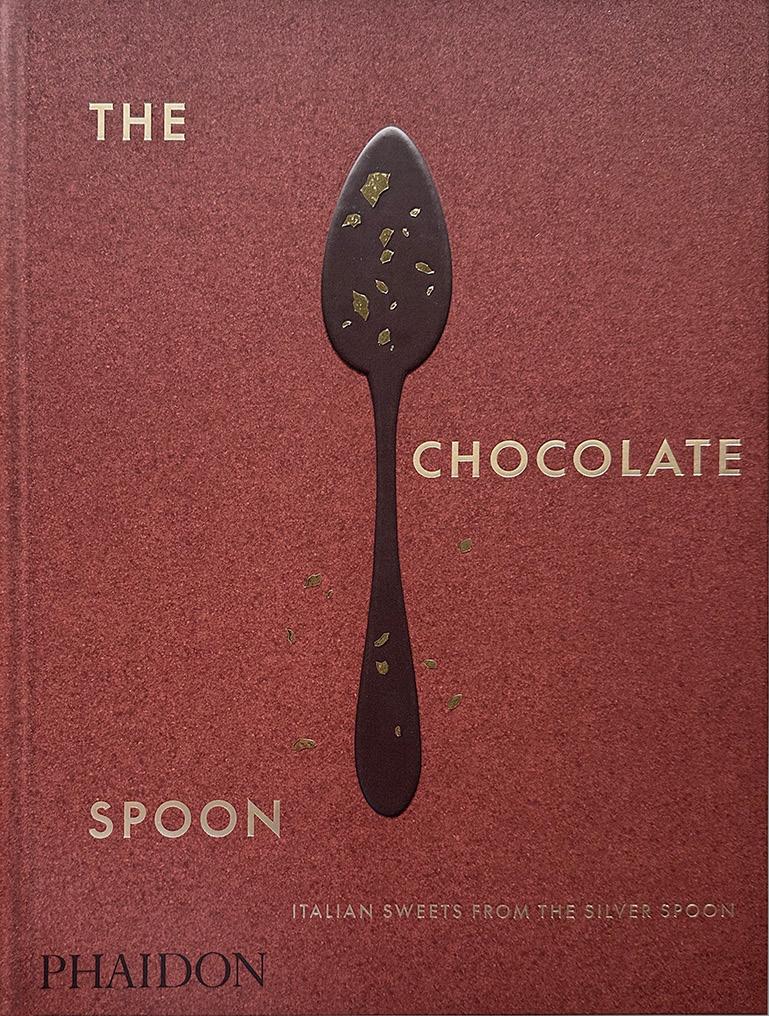
The Silver Spoon Kitchen
Phaidon ; $69.95
Level up your chocolate game with an in-depth guide from renowned Italian cuisine icons The Silver Spoon Kitchen. The Chocolate Spoon features 100 of the best Silver Spoon recipes that hero dark, milk, ruby, and white chocolate. It’s the ideal tome for those new to the craft of chocolate, with step-bystep processes and accompanying photography on how to temper, glaze, and shape chocolate-centric creations all included. Whether it’s cake, cookies, ice cream, or parfait, you’ll be a chocolate master in no time. Released 10 August.
Native nuances
The Sydney Opera House welcomes a new culinary residency this month with the opening of Midden by Mark Olive. Bundjalung man and celebrated Indigenous Australian chef Mark Olive is spearheading the restaurant which showcases his heritage and a vast array of native ingredients. Expect blue gum-smoked barramundi, wallaby shanks with bush tomato, damper bread infused with native herbs, and quandong-glazed chicken with Warrigal greens. Doltone Hospitality Group is operating the venue, which is taking over the former Portside space in the western foyers of the Opera House.
Photography by Yazzen Omar
12 | Hospitality NEWS // Entrée
Lola’s goes Italian
Bondi Beach restaurant Lola’s 1 Level has undergone a transformation and relaunched as Lola’s Italian & Bar. Restaurateurs

Marco Ambrosino and Manny Spinola opened the venue in 2021, which originally revolved around Mediterranean flavours. “We hope for Lola’s to become a classic Italian restaurant, adding to the vibrant tapestry of Bondi’s dining scene,” says Spinola. Former Old Fitz and Fabbrica chef Toby Stansfield is leading the kitchen and has launched a debut menu that includes semolina spaghetti with ’nduja, vongole, and pangrattato plus a king prawn risotto with bisque and crudo. lolasitalianandbar.com.au


Photography by Craig Wall
A taste of Italy
40-seat Art Deco venue Bar Morris has opened in the Sydney CBD inside the new Hotel Morris. Head Chef Rosy Scatigna is running the kitchen after time at Michelin-starred restaurant Lume in Milan and The Hand & Flowers in Marlow. The chef has put together an Italian-inspired menu that sees dishes based on classics with a modern twist such as a cheese Madeleine with guanciale and ’nduja emulsion. Drinks-wise, the wine list stars Australian and Italian producers, with signature cocktails covering a Negroni Speziato with Chinese five spice-infused gin and amaro. barmorris.com.au
Photography by Steven Woodburn
Scott Lord joins Commune Group’s Moonhouse

Alumni of New Quarter, Sunday Dining, and Cumulus Inc Scott Lord has been appointed executive chef of Chinese bistro Moonhouse in Melbourne’s Balaclava. Joining Executive Group Chef Anthony Choi and new Head Chef Chris Cann, Lord has refreshed the venue’s food offering which now combines Chinese and European influences. Additions to the menu include steak tartare with Sichuan; roasted duck pancakes with peach hoisin and plum salt; and steamed market fish with diner’s choice of broth. moonhouse.com.au
Photography by Jake Ellis, C-Bass Creative
Noosa Beach House announces new team
Noosa Beach House has entered a fresh chapter under newly appointed Executive Chef Bret Cameron. After time spent working across Byron Bay’s Harvest Newrybar and Sydney’s Four in Hand, Cameron has joined the Noosa Heads favourite and is introducing a producer-to-plate offering focused on small-scale farmers from Queensland. The exec chef is joined by Director of Food and Beverage Martijn de Boer (Mimi’s and Will’s), Head of Beverage Remon Van de Kerkhof (Oncore by Clare Smyth), and Restaurant Manager PJ Choroomi (Ume, Koi, and Blancharu). noosabeachhouse.com.au
Photography by Steven Woodburn
July 2023 | 13 NEWS // Entrée
Origins
The gilda is a classic Basque pintxos that comprises three ingredients: Guindilla peppers, an anchovy, and an olive skewered together. The savoury snack first appeared in the 1940s at Bar Casa Valles in San Sebastian, Spain, which is one of the earliest and most influential pintxos bars in the area. While the origin location is widely accepted, there is debate around exactly who created the first gilda. Owners of Bar Casa Valles and brothers Blas and Antxon Valles served the components of a gilda at their venue, but regular Joaquin ‘Txepetxa’ Aramburu is said to be the one who combined the ingredients together on a toothpick, with other patrons following suit. The pintxos fast began to appear at other establishments across Spain and became a
Gilda
staple. As for the name? It’s an homage to the 1946 American film noir which featured a spicy, sassy character called Gilda played by Rita Hayworth.
Ingredients
The traditional elements of a gilda are Guindilla peppers, a green olive, and an anchovy. The Guindilla pepper is grown in the Basque region and is identifiable by its long, narrow body and relatively mild heat level. The peppers are pickled in white wine vinegar, resulting in a tangy profile that retains the fruitiness of the chilli. Manzanilla olives are produced in Spain and are some of the highest quality olives available on the market, revered for their gentle brininess. The final ingredient is tinned anchovies. Any restaurant-level
Manzanilla olives are the most traditional option
Usually only one anchovy fillet is speared
Guindilla peppers balance out the savouriness
anchovies will do, but Ortiz are a firm favourite among chefs.
Preparation and flavour profile


The composition of a gilda all comes down to preference — but typically, the Guindilla pepper has the heaviest presence on the skewer or toothpick. The order in which the ingredients are skewered also varies, but most sandwich an anchovy fillet in between peppers and an olive (or two) before finishing with a glug of extra-virgin olive oil.
Given the ingredients are cured, pickled, and brined, the pintxos is heavy on the salt, making it the perfect accompaniment to vermouth, aperitifs, and classic cocktails. The gilda is designed to eat in one bite and generates an immediate reaction from the palate, making it an unforgettable snack. ■

14 | Hospitality DISH
// Gilda
ANATOMY
The briny skewer is one of the OG pintxos.
WORDS Annabelle Cloros
Invented in San Sebastian
One of the foundational pintxos in Spain
Lennox Hastie called his Basque-inspired bar Gildas after the iconic snack
Named after a Rita Hayworth character







Compare multiple quotes Protect your business instantly Save time and money *Must be a Qantas Business Rewards member. Maximum of 10,000 Qantas Points earned per policy. Available to new BizCover policy purchase only and not available with any other offer. See Terms & Conditions at bizcover.com.au/qbr The information provided is general only and should not be relied upon as advice. BizCover Pty Ltd (ABN 68 127 707 975; AFSL 501769) © 2023 BizCover. BC2449 bizcover.com.au 1300 805 821 Earn Qantas Points for every dollar spent on a new small business insurance policy* SCAN TO COMPARE QUOTES
Serving suggestion
CookingCream2L
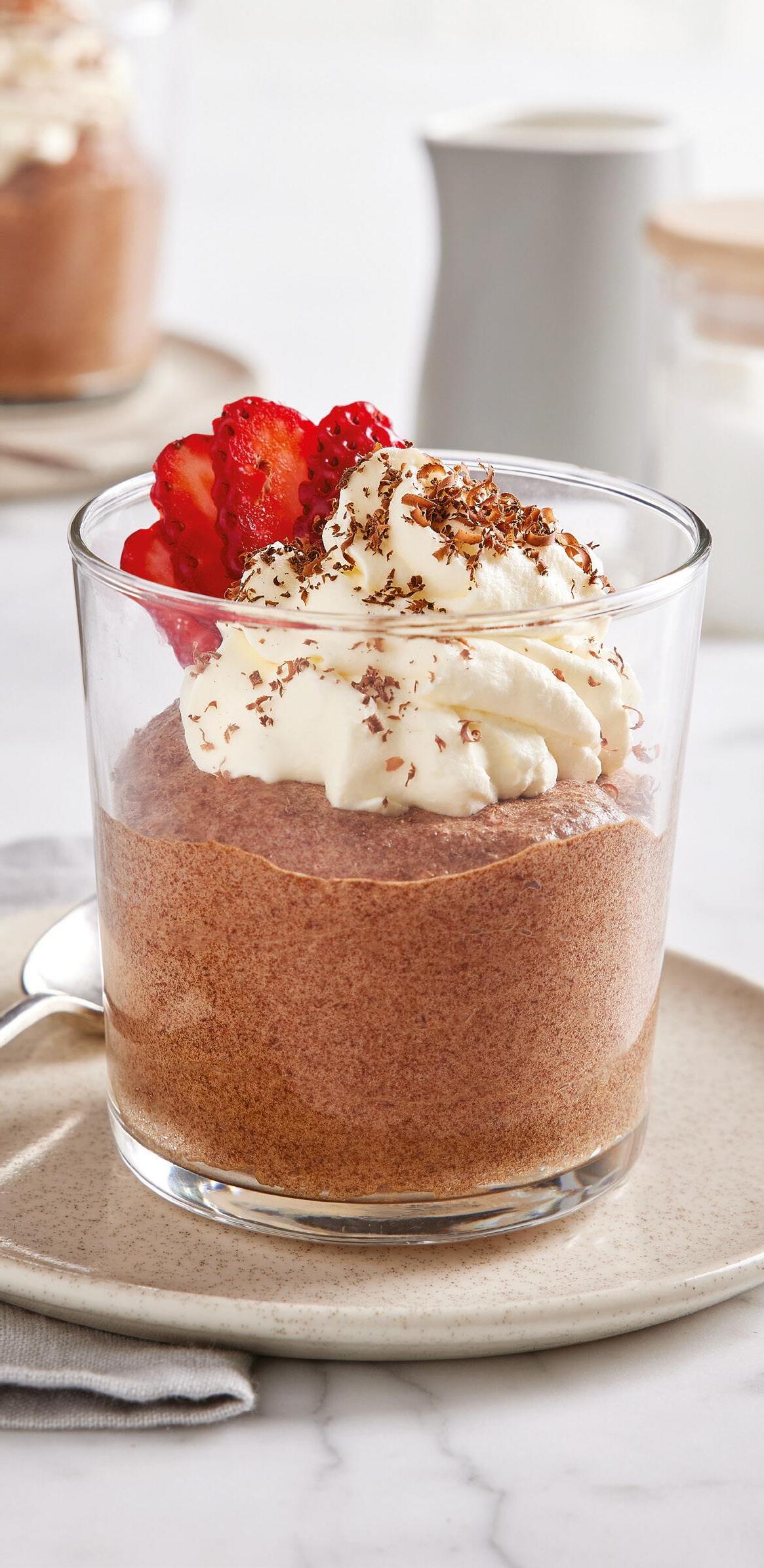
• 18% fat
• Heats quickly to high temperatures, without burning or splitting
• Ideal viscosity for sautéing, reducing, pan-frying, baking, freezing and whipping

Thickened Cream 5L


• 35% fat
• Rich cream flavour
• Suitable for halal, kosher and vegetarian customers
• Gelatine free
Serving suggestion
SlicesRange
• High yield
• Strong cheese flavour


• High melting point
• Packed perfectly for convenience and efficiency
CheeseRange
• Strong parmesan and mozzarella flavours



• Natural White To Light Cream Colour
• Shredded or shaved profiles
For more information, please visit www.begafoodservice.com.au



Serving
suggestion
Prawn toast
Redbird Chinese’s take on the Cantonese dim sum.
PHOTOGRAPHY Nikki To
REDBIRD CHINESE IN Sydney opened its doors in Redfern last year and is headed up by award-winning Executive Chef Hamish Ingham. A modern take on Chinese cuisine is seen across the menu, which features plenty of familiar favourites including prawn toast. Here, Ingham shares his version of the entrée.
Ingredients
400g fresh king prawns (peeled and cleaned)
10g ginger
20g shallots
1/2 bunch coriander
Pinch white pepper
5g sugar
2 slices white bread
100g white sesame seeds
Vegetable oil (for frying)
Ground Sichuan pepper
Method
1. Mince half the prawns and clean and dice the remaining. Finely dice ginger, slice shallots and coriander, and season with pepper. Add sugar and mix together with the prawns.
2. Cut each slice of bread into four even triangles and remove the crusts. Evenly spread a tablespoon of the prawn mixture over each triangle and place the prawn side into the sesame seeds. Coat each piece.
3. Bring a heavy-based pot of vegetable oil up to 180 degrees Celsius and deep fry the prawn toast until golden brown. Drain and season with Sichuan pepper and serve with dipping sauce.

18 | Hospitality
RECIPE // Prawn toast
Bar cart
Thirst quenchers, slow sippers, and all things beverage related.
 EDITED BY Amy Northcott
EDITED BY Amy Northcott
No glass
There’s a new kid on the boxed-wine block in the form of UnBottled Wine. Former sommelier Ann Marie Grace and business partner Mike Banks work with wineries to create seasonal boxed wines that are as sustainable as possible. UnBottled Wine’s first release features wines from McLaren Vale Winemaker Brash Higgins and includes a Chenin Blanc, Cinsault, Cabernet Franc, and a Grenache Mataro blend. The wines are $85 per box and can be purchased individually or in packs. unbottledwines.com
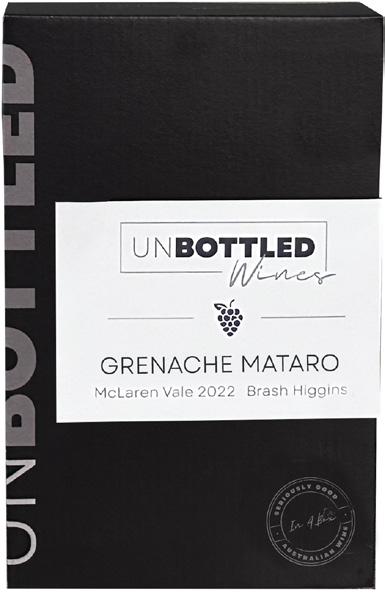

The dark side
Non-alcoholic beer specialists Heaps Normal has launched a limited-edition Coffee Run stout. Teaming up with Newcastle’s Floozy Coffee Roasters, the beverage is made with cold brew coffee from Floozy’s Golden Hour bean blend. “It’s a light-hearted play on combining two of our favourite drinking occasions — latenight beers and early morning coffees,” says Heaps Normal CoFounder and CEO Andy Miller. “It’s a coffee that can be drunk at any time of the night, or is it a beer that can be drunk at any time of the morning? You decide.” Available from selected retailers, venues, and online. heapsnormal.com
Photography by Nikki To
Spice it up
Sydney distillery Hickson House has teamed up with renowned Chef Sean Connolly to release a collaborative gin. Hickson Rd. Seven Spice is a showcase of Australian native botanicals and includes a combination of mountain pepper leaf, finger lime, wattle seed, bush tomato, aniseed myrtle, native lemongrass, and lemon myrtle. The tipple has been designed to pair with food, with Connolly curating a limited menu that was served alongside the gin last month. The gin is priced at $75 and is available online and at the distillery. hicksonhouse.com.au

New blood
Four Pillars has welcomed a new tipple to the fold with the launch of the Bloody Pinot Noir gin. Crafted from Yarra Valley Pinot Noir grapes, the gin is slightly more delicate in flavour and aroma than sibling spirit the Bloody Shiraz gin. Expect notes of cherries, roses, and strawberries with refreshing acidity. The launch coincides with the release of the 2023 Limited Edition Bloody Shiraz gin which features label artwork by Australian illustrator Luke Lucas. Both gins are 700ml and $88. Available from Four Pillars locations and bottle shops. fourpillarsgin.com

Photography by Benito Martin
Under the sea
South Australia’s Taylors Wines is continuing its mission to help save the country’s seahorses with two new vintage releases from the Promised Land wine collection. 2022 Sauvignon Blanc and 2022 Rosé are the latest additions to the collection and feature refreshed labels. The Clare Valley winery is donating a percentage of proceeds from every bottle sold to global marine conservation organisation Project Seahorse. All wines in the Promised Land range are $16 and are available online and from bottle shops. taylorswines.com.au


July 2023 | 19 NEWS // Drinks
Don’t forget the duck
There are new, affordable, and high-quality options now available in Australia.
HAVE YOU BEEN thinking about adding a new protein to your culinary offering? Duck is a great addition to any menu and can easily substitute other meats such as chicken, beef, and pork, resulting in an unrivalled flavour profile on the plate. It’s a versatile protein that lends itself to an array of applications, whether it’s on pizza, in tacos, or the star of a Peking duck pancake.

Due to a free-trade agreement between Australia and Thailand, Australian hospitality venues can now purchase cooked duck products for the first time. Until now, the availability of fresh, frozen, and cooked duck products has been restricted to domestic production which can be expensive and limiting when it comes to availability. Thailand is known for its high-quality duck meat and is also more affordable than domestic duck products, which enables operators to save.

CP Foods is the world’s largest agro-industrial company and is one of the leaders in the Asia-Pacific region. Founded in 1921, CP Foods has dedicated itself to animal welfare, worldstandard farming practices, and high-quality processing. The company can provide 100 per cent traceability with no requirement for third-party providers. It has been awarded with the QS certification for poultry — the only company outside of the European Union to hold it.
In line with the trade agreement, CP Foods is launching a number of versatile, high-quality duck products. There’s an array of portion sizes to suit any venue, ranging from half or whole ducks to different shredded meat packs. The CP Foods duck range also saves time in the kitchen. With its quick and easy preparation, it’ll be on the plate in no time.
The CP Foods duck range includes:
Aromatic shredded roast duck: An ideal option to elevate your taco offering or a great addition to salads, soups, noodle dishes, and pizzas.
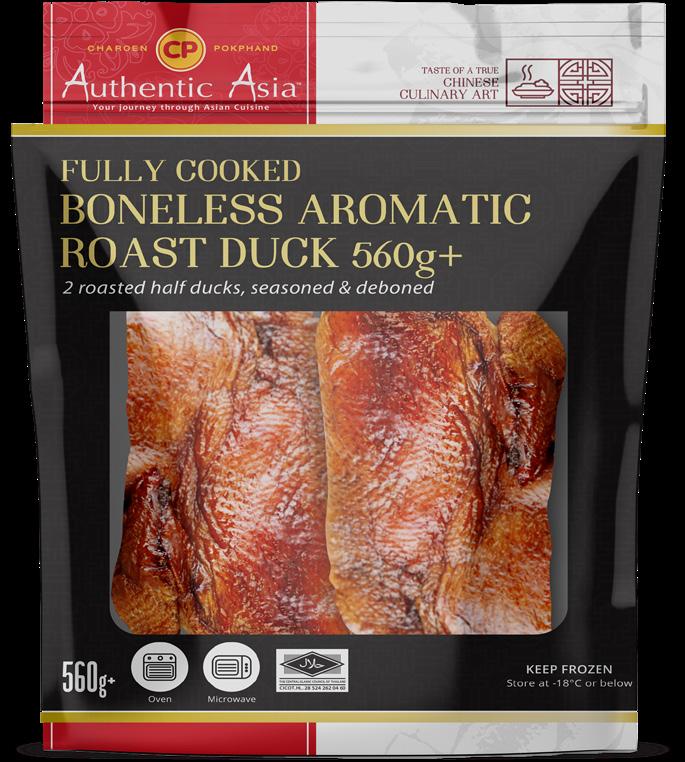

Boneless duck breast: Stands its ground in flavour when served by itself or can be added to any dish as a substitute for beef, chicken, or pork.
Boneless fried duck: Suits traditional Peking-style pancakes and can be used in salads, stir fries, banh mi, and tacos.
Roasted aromatic shredded duck: An easy and flavoursome addition to pizzas, soups, salad, or sushi.
Whether you’re using duck to elevate an existing protein-led dish or to feature in a new culinary creation, CP Foods’ high-quality, flavoursome duck is sure to satisfy customers.
To find out more about the CP Foods duck range, visit cpfglobalsourcing.com/duck or email orders@cpau.com.au ■

20 | Hospitality ADVERTORIAL // CP Foods



















DRINKS // Sgroppino 22 | Hospitality
Sgroppino
The Venetian drink is part-pre-dessert, part-cocktail.
WORDS Annabelle Cloros
PHOTOGRAPHY Nikki To
MAURICE TERZINI FIRST came across the sgroppino in Venice, Italy — the birthplace of the not-cocktail, not-quite-dessert. The restaurateur put the palate cleanser on the menu at his first restaurant Caffe e Cucina in Melbourne’s South Yarra before it made the jump to Icebergs Dining Room and Bar where it has become synonymous with the Bondi dining experience. Most restaurants and bars have signature dishes and drinks, but few manage to stand the test of time — the sgroppino at Icebergs is one of them.
Bar Director Matty Opai will soon hit his ninth year at Icebergs and has made his fair share of sgroppinos. He speaks to Hospitality about its intrinsic links to the restaurant, how the bar team construct sgroppinos tableside, and why orders spread like wildfire once the trolley hits the floor.

The sgroppino first appeared on the tables of Venetian aristocrats back in the 16th century. Made of lemon sorbet and a slosh of alcohol, the drink was served to the elite in between courses to clear the palate and “untie a little knot”, which is where the name sgroppino comes from.

The modern iteration of the sgroppino stays true to the original, which is in line with the broader Icebergs experience — tradition is indispensable. And while the drink has been around for hundreds of years, it’s not one you see often. Matty Opai had never heard of the sgroppino until he started working at Icebergs. “It’s not a normal cocktail,” he says. “Maurice
came across it in the ’80s when he was in Venice. He put it on the menu at Caffe e Cucina and they would make hundreds using a blender.”
Icebergs has served the drink from the beginning, with a hands-on approach taking the place of machinery. “Maurice is very traditional in what he does,” says the bar director. “When Icebergs adopted it 20 years ago, they created some theatre around it with the tableside element, which is how it’s made today.”
There are just three ingredients that go into a sgroppino — lemon sorbet, Prosecco, and vodka. And while bartenders can riff: “I’ve added tequila and lime juice before to make it tarter”, says Opai, the drink just wouldn’t be the same. “As soon as you start using different-flavoured sorbets and ingredients, it stops being what it was designed for. It would still be an amazing drink, but it’s a cocktail with sorbet — not a sgroppino. It’s a palate cleanser, which is why the flavours are quite neutral.”
The sorbet component is left to the experts (Icebergs’ kitchen team), which is joined by Belvedere vodka and house Prosecco. All guests need to do is order one and wait for the trolley to arrive. “90 per cent of the time, people have it post-mains and prior to dessert, but we do have a few locals who order one as soon as they sit down,” says Opai. “I suppose you could have it as a pre-palate cleanser and order another one later.”
Lemon sorbet is made in-house
First appeared in the 16th century in Venice, Italy
Icebergs assembles the drink tableside
Two scoops of sorbet go into each sgroppino
July 2023 | 23 DRINKS // Sgroppino
The construction of the sgroppino is theatrical and experiential. Carafes of Prosecco and vodka are placed on a tablecloth-clad trolley alongside a bowl, mixing forks, a serving spoon, the sorbet, and Nick & Nora glasses. “The thing with the tableside aspect is that once you wheel it over, the next group says, ‘What’s that? I want one’,” says Opai. “It catches on like wildfire and the entire section wants it. The busier the restaurant is, the more we make.”

It takes around five minutes for a member of the Icebergs team to make sgroppino portions, “which does get difficult on the arms”, says Opai. The process begins with working the ice crystals out of the sorbet, with two scoops allocated to each drink. “We crush the sorbet, then add 30–40ml of Prosecco which froths the mixture up and creates a very light, airy texture with the sorbet. Then we add 30ml of Belvedere — which helps the thawing process a bit because of the alcohol — and it turns into a velvety-smooth drink.”
Breaking down the sorbet is one of the main pressure points of making a sgroppino, which should emulate a smoothie. “There’s a lot involved when you start whipping out all the lumps to get a super-smooth texture,” says Opai. “We whip it until the mixture starts to drop from the fork but still leaves [some behind] — that’s when it’s ready to go. The hardest part for a lot of people is making something in front of guests. The whole time you’re thinking, ‘Don’t spill, don’t spill’, so that’s probably the most challenging component, but it’s a super simple thing to do.”
A sgroppino is a core part of the Icebergs dining experience, and while it’s been on the menu for two decades and counting, the restaurant still goes through 5 litres of sorbet on Saturdays. “It
gets a lot of air time on Instagram and TikTok, so we’ve become famous for it,” says Opai. “Social media definitely helps drive it and it has become a lot more popular.”
And it’s not just the guests who get to enjoy the zing of the palate cleanser. “We always try to taste and make sure we’re making it right … for no other reason than quality control,” laughs Opai. The proof is in the longevity of the sgroppino at Icebergs — it’s a drink that requires a hand for pouring, an arm for churning, and an eye for detail. ■

24 | Hospitality DRINKS // Sgroppino
“It catches on like wildfire and the entire section wants it.”
– Matty Opai

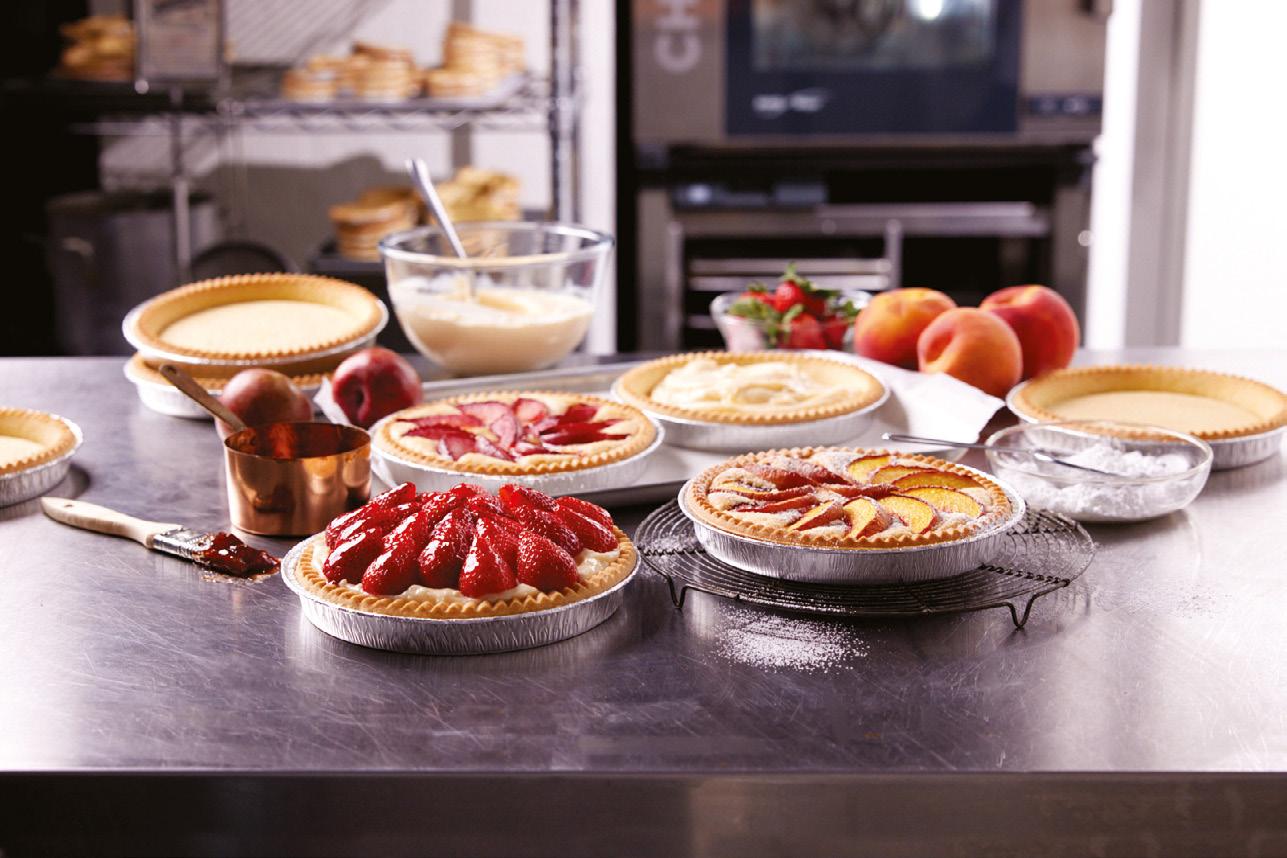


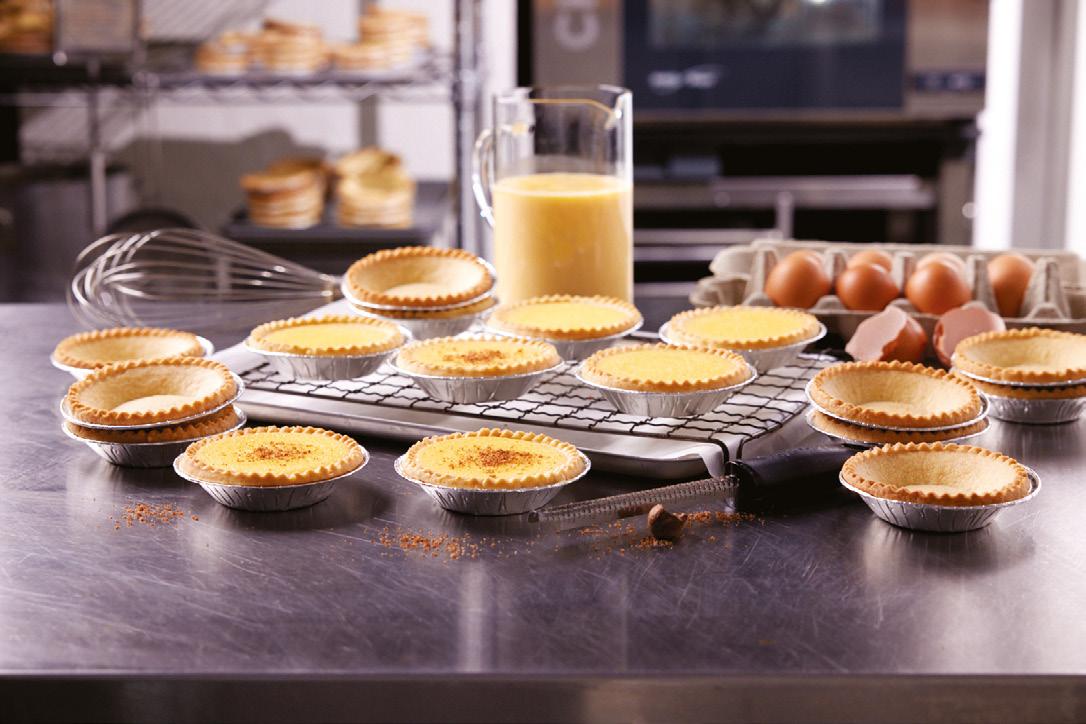
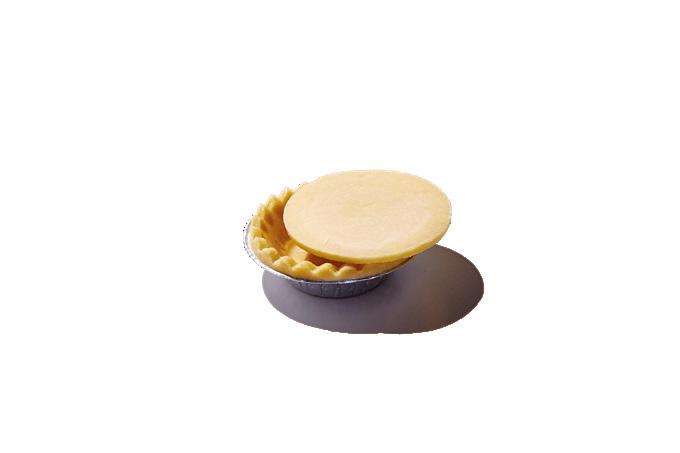



Discover the difference
WHEN IT COMES to dishwashers, Miele has long been a trusted name in the industry. With a guiding principle of the highest quality — immer besser (forever better) is the common goal.
Miele Professional is the only manufacturer to test its products for a service life of up to 30,000 operating hours. Whether your business requires hygienically clean glassware or freshly washed laundry daily for guests, Miele’s guiding principle has driven the business for more than 115 years to develop the best commercial solutions for its customers, so that they in turn can offer their customers the best results.
Renowned for exceptional quality and innovative features, Miele Professional commercial tank (PTD 703) and freshwater dishwashers (PG 8059) are designed to deliver outstanding performance in professional settings. Explore the numerous benefits these dishwashers offer that make them the perfect choice for the hospitality industry.
Unmatched cleaning efficiency
Miele Professional commercial dishwashers are engineered to provide superior cleaning results. With advanced technology and powerful wash cycles, they efficiently remove stubborn stains, grease, and grime, ensuring spotless and hygienic results every time. The
combination of high water pressure, precise temperature control, and effective detergent distribution guarantees optimal cleanliness for dishes, glasses, and utensils.

Time and cost savings
In a bustling commercial environment, time is of the essence. Miele Professional dishwashers offer quick and efficient cleaning cycles, allowing you to process large volumes of dishes in a shorter amount of time. The PTD 703 tank dishwasher has a short cycle of just 55 seconds* and a capacity of 1,170 plates per hour. The PG 8059 freshwater dishwasher has a short cycle time of six minutes* and a capacity of 380 plates per hour.
The time-saving feature not only boosts productivity, but also helps to streamline operations. Additionally, Miele Professional dishwashers are designed with energy and water efficiency in mind, contributing to significant cost savings in the long run.
Durability and reliability
Investing in a commercial dishwasher is a long-term commitment, and Miele Professional understands the importance of durability and reliability. All products undergo meticulous and rigorous testing, for example, the doors on Miele’s dishwashers are tested to open and close 100,000 times**.

Hygiene and safety features
Maintaining optimal hygiene and safety standards is crucial in any commercial setting. Miele Professional dishwashers incorporate several features to ensure hygienic and safe dishwashing practices. Freshwater dishwashers change the water after each cycle — enabling a constantly high cleaning performance and hygiene thanks to repeated water changes.
Enjoy peace of mind from a hygiene perspective with a maximum final rinse temperature of 90 degrees Celsius (PTD 703 tank dishwasher) and 85 degrees Celsius (PG 8059 freshwater dishwasher) to ensure proper sanitisation. By prioritising hygiene and safety, Miele Professional helps businesses maintain compliance with health and sanitation regulations.
“The Miele Professional range of freshwater and tank dishwashers are the product of choice for the hospitality industry,” says Ross Evans, director of Miele Professional, Australia. “With short cycles, low consumption values and rigorous testing to ensure durability, they excel in hotels and restaurants.”
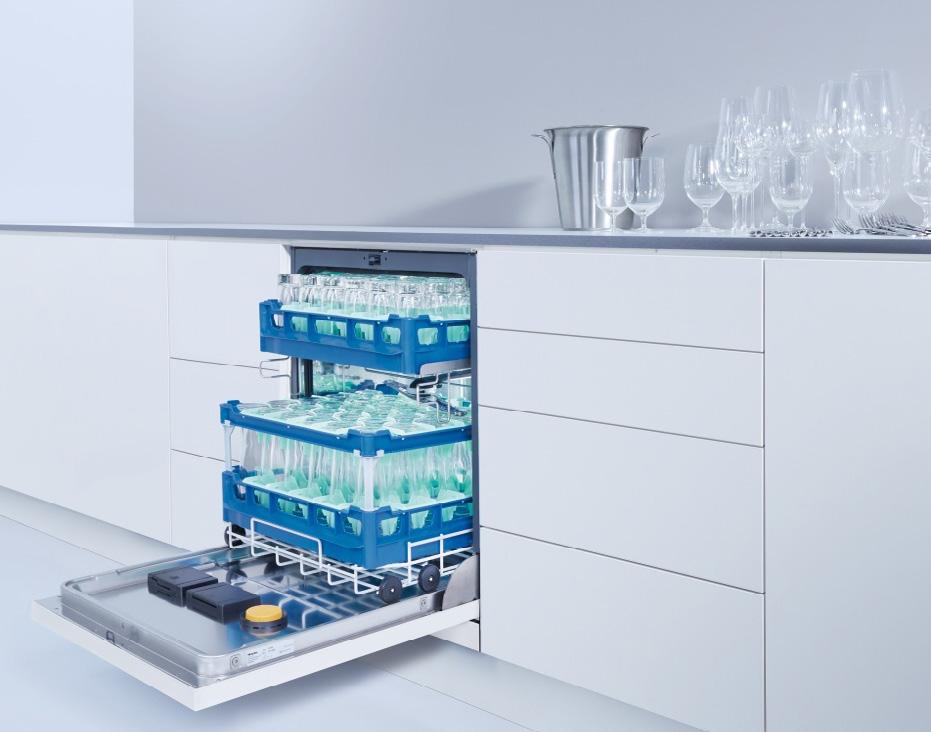
To request a quote, contact Miele Professional. ■
*The values quoted may vary depending on the on-site conditions (electrical connection/water inlet temperature). **Statements can vary depending on specific product categories and machine capacity.
26 | Hospitality ADVERTORIAL // Miele Professional
Introducing the Miele Professional range of commercial tank and freshwater dishwashers.
PG 8059 freshwater dishwasher
PTD 703 tank dishwasher


Handle all the dishes with just one touch. Fast, efficient, easy to use. Miele undercounter tank dishwashers with intuitive touch-display. Short cycle time of just 55 seconds*. Improved touch screen for simple handling – and an optimised dishwashing system that considerably cuts costs. Miele undercounter tank dishwashers: a clean and simple solution! Miele Professional. Immer Besser. www.miele.com.au/professional 1300 731 411 * The values quoted may vary depending on the on-site conditions (electrical connection/water inlet temperature).

28 | Hospitality PROFILE // Annita Potter
Annita Potter
WORDS Amy Northcott
AFTER SPENDING MUCH of her career working alongside David Thompson, it’s safe to say Annita Potter knows a thing or two about Thai cuisine. From Nahm to Long Chim, her career has taken her to Paris, London, Singapore, and Thailand. But after decades living abroad, she decided to put down roots in Sydney and open Viand in Woolloomooloo. Potter’s offering at Viand is not the kind of Thai cuisine most are familiar with — and that’s exactly how she likes it. Potter looks back on her career with Hospitality, covering lessons learned from Thompson and the cuisine she’s serving up at Viand.
Annita Potter grew up in Perth with a Croatian and Italian family, which saw her swiftly immerse herself in the world of cooking. “Food was a big thing in our family,” she says. “It was always talking about the next meal during the meal we were eating.” While her father wanted her to become an accountant, Potter decided to head down the culinary career path. “I didn’t really know what the industry would look like at all, I was a person going, ‘Yeah, I can cook’.”
Potter’s first apprenticeship was at Bay Restaurant in Perth, with the chef going on to work overseas like most of her peers. But unlike those who opted to go to London, she decided to challenge herself by heading to Paris. It was here where she worked at The
Kitchen, which served French and European cuisine, with Potter feeling like a very small fish in a very big pond.
But after her mother became unwell, Potter returned to Perth and had plans to take on a job in Italy later on. But the restaurant suddenly closed and she found herself in Perth for longer than expected. “It’s when I really decided I didn’t want to be there ... I needed something else,” she says.
The extended stay turned into a pivotal moment for the itchy-footed chef. She found herself at a dinner hosted by her soon-tobe mentor and Thai cuisine expert David Thompson. “I got him [Thompson] to sign a book and all I was thinking was, ‘Oh my god, I want to be like you’,” she says. Amidst the awe, Potter took Thompson’s email address and sent him her resume. Months passed and she heard nothing, going on to travel to London. Potter decided to approach Thompson’s Michelin-starred restaurant Nahm in person and try her luck. “The next thing I know I’m banging on the door in London saying, ‘I want a job!’” she laughs. Nahm’s head chef gave Potter a gruelling 12-hour trial shift only to tell her there were no positions available when it was over. “However, he thought I would be a great fit in the kitchen,” she says. “[He said] if I could give him a few

July 2023 | 29 PROFILE //
Annita Potter
The chef on her career in global kitchens and why you won’t find green curry on Viand’s menu.
days to talk with David, he could perhaps create a position.” Soon after, Potter received the call to say she was hired — and that’s where her journey with Thompson began.
“It was one of those sink-or-swim kitchens and probably one of the toughest I’ve worked in,” says Potter on Nahm’s kitchen environment. “Every single thing was done perfectly and if it wasn’t, it was done again.” Potter says Thompson’s dedication to preserving Thai cuisine is something to be admired. “He doesn’t compromise and nor should he,” she says. “He has learned so much — he’s basically the oracle of Thai food.”
Thompson’s dishes are based on foundational Thai recipes translated into English, with the chef only slightly modifying the originals to use accessible, modern-day ingredients. “He believes in standing up for the integrity of the cuisine rather than allowing things to change or soften,” says Potter. “It has taught me to keep that same level of work ethic and authenticity.”

Potter worked with Thompson at Nahm for about a year until it closed. Before the restaurant shut down, Thompson approached each staff member and asked about their ideal next workplace. “Everyone was like, ‘I want go and work with Gordon Ramsay’, or ‘I want go and work with Heston Blumenthal’,” she recalls. “He [Thompson] would call them up, and basically
all the wishes were granted.” While she admits it was a huge opportunity career-wise, Potter travelled overseas to work with Thompson. “I said to him, ‘I came to work with you, so you find me a job’,” she says. Thompson told Potter there was a position for her in Bangkok — and it is where she went.
The chef relocated to Thailand with Thompson to set up base and went on to launch the first Long Chim restaurant in Singapore. It was a time of bouncing between countries for Potter who describes the experience as “basically everything I wanted to do”.

The two chefs eventually returned to Australia to open Long Chim in Sydney. Potter says it was a memorable but demanding experience. “I felt a lot of pressure myself being fully aware it was David coming home [to Australia],” she says. Long Chim opened in Martin Place, with another local venue launching in Melbourne. Potter was left to run the Sydney kitchen while Thompson was in Melbourne. “He [Thompson] was in and out, but it was my kitchen and everything was my responsibility,” she says. “I fell into the pocket of being used to that spotlight and embracing it … I don’t know if I necessarily liked or disliked that position — it was just my job.”
After six months, Potter set off again to Bangkok and London before returning to Sydney in 2019 to open Viand. Launching her own venue was always on the cards for the chef, even when she was working with Thompson. “It was whether or not I stay with David and continue jumping around the world,” she says. “But things were getting to
30 | Hospitality
PROFILE //
Annita Potter
Table management well served.
Australian venues have always been a meeting place for people to gather, eat, drink and laugh. ResDiary ensures you will be well served with commission-free bookings and table management systems that simplify operations, slash admin and attract more diners. Simply scan the QR code or visit ResDiary.com to find out how we can best serve you.






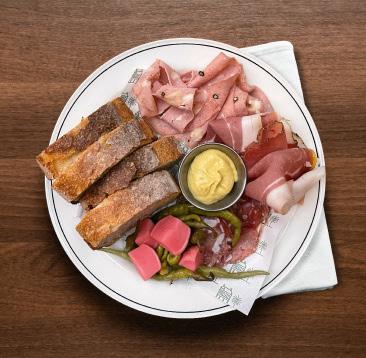



Well served by
a point where if I was going to do something, I needed to start thinking about it soon.”
Viand was a pop-up in the Mint in 2020 until early 2021 before it moved into more permanent digs in Woolloomooloo the following year in March. Viand’s menu features five- and eightcourse degustation menu options, which Potter says was a conscious choice. “It’s what dining used to be, where diners would be like, ‘Just look after me and look after me well’, rather than the forgotten diner who just gets thrown a menu.”
Potter’s approach to Thai cuisine is heavily influenced by her time with Thompson, and the result is quite different to what most Sydney diners are acquainted with. “I’m trying to push boundaries with things people are not used to eating,” says Potter. “But with Sydney having Thai food for so many years, it’s like me saying, ‘It’s not really Thai food you’re eating’.” Potter says she had to be very careful with how far she went with unfamiliar flavours and dishes. “The Sydney [market] is so close knit, they know what they like and have high expectations.”
Some of the dishes you’ll find on Potter’s menu include a red curry of minced quail with young ginger snake beans, and nutmeg plus Gregory Island tiger prawns with banana blossom, golden shallots, and chilli jam. But something you won’t come across? Green curry. “I’m not doing green curry or any of those kinds of things because the local place down the corner you’ve been going to for years will be the benchmark,” says Potter. “Whether it’s good or bad, it doesn’t matter. But the green curry I give you will be completely different, and because you’re not used to it, it’ll automatically be wrong.”
One dish on Viand’s menu pays homage to Potter’s time with Thompson, with her version based on the egg nets he served at Nahm. “I don’t call them egg nets to slightly disassociate myself from him and his cooking, but essentially it is an ode to my time working with David,” says Potter. “It was one of the first dishes I had in the kitchen at Nahm that almost transformed how I saw Thai food.” Potter says there’s quite a few dishes that have sprinklings of Thompson’s technique and style, but the egg nets stand out. “It’s one of the most memorable, in both good and bad ways,” she laughs.
Viand has been open for just over a year, and Potter and her team feel very grateful for the support and strong following of return customers. “It is those regulars who come back in and keep you kicking,” she says. “They allow you to grow and progress because they’re like, ‘We’ve done this a couple of times, what’s next?’”
As for the goal for the rest of 2023? There are no grand plans at the moment, but the aim is to continue regular service along with the restaurant’s sell-out BYO nights and hands-on cooking masterclasses led by Potter herself.

If you ever find yourself visiting Viand, you’ll be sure to see the chef in action in Viand’s open kitchen. For Potter, there’s no other place she’d rather be. “Everyone keeps telling me it’s rare I’m in the kitchen as the name chef, but they’re coming in to eat my food,” she laughs. “So perhaps it’s me with a fear of missing out, but I want to cook for everybody.” ■

32 | Hospitality
PROFILE
// Annita Potter
“So perhaps it’s me with a fear of missing out, but I want to cook for everybody.” –
Annita Potter
Hostplus is a top-performing super fund that puts members first. That’s why we’re proud to have been named the 2023 Fund of the Year by third-party ratings agency SuperRatings. Judged across three areas: strong performance, competitive fees, and an ongoing focus on members, we’re thrilled to receive this recognition.





The rating is issued by SuperRatings Pty Ltd ABN 95 100 192 283 AFSL 311880 (SuperRatings). Ratings are general advice only and have been prepared without taking account of your objectives, financial situation or needs. Consider your personal circumstances, read the product disclosure statement and seek independent financial advice before investing. The rating and awards are not recommendation to purchase, sell or hold any product and are only one factor to be taken into account when choosing a super fund. Past performance information is not indicative of future performance. Ratings are subject to change without notice and SuperRatings assumes no obligation to update. SuperRatings uses objective criteria and receives a fee for publishing awards. Visit www.lonsec.com.au/superfund/ratings-and-awards/ for ratings information and to access the full report. © 2022 SuperRatings. All rights reserved. General advice only. Consider the relevant Hostplus PDS and TMD at hostplus.com.au and your objectives, financial situation and needs, which have not been accounted for. Awards and ratings are only one factor to consider. Host-Plus Pty Limited ABN 79 008 634 704, AFSL 244392 trustee for Hostplus Superannuation Fund, ABN 68 657 495 890. HP2391

HOSPITALITY LEADERS SUMMIT Partner
Bresaola carpaccio with Grana Padano PDO
The classic Italian dish is levelled up with Grana Padano PDO.
CHEF DONATO COFANO is the owner of Tacco & Tosca restaurant in Middle Park, Victoria. The Italian eatery is known for its trattoria-style approach to dining, which combines premium local produce with classic Italian techniques.

Bresaola originated in Valtellina in the Lombardy region in Italy, and sees beef salted and seasoned with garlic and spices before it is air-dried for around three weeks. The savoury quality of the cured meat means it’s the ideal fit with celery, pear, and Grana Padano PDO, which is Cofano’s cheese of choice at the restaurant. “One of my favourite dishes to make with Grana Padano is carpaccio bresaola,” he says.
The chef’s composition of the dish
starts with layering thin slices of bresaola on a plate before adding chopped celery and sliced pear for freshness. The dish is dressed with a vinaigrette of olive oil and balsamic and garnished with celery leaves before Grana Padano PDO is shaved over the top. “The taste is sweet and not too aggressive,” says Cofano. “The dish has balance between the beef, pear, balsamic, and celery which all go together.”
For more information on Grana Padano PDO, visit congafoods.com.au

Scan the qr code to watch the masterclass
Ingredients
Serves four
300g thin sliced beef bresaola
1 celery heart
1 green pear
1 lemon
100ml extra-virgin olive oil
30ml balsamic vinegar
30ml balsamic glaze
100g Grana Padano PDO

Salt and pepper
Method
1. Thinly slice celery heart and pear into medium-sized pieces.
2. Place thin slices of beef bresaola on a plate and place the slices of celery heart and pear on top of the bresaola.
3. Mix extra-virgin olive oil, balsamic vinegar, and juice of a lemon in a bowl and pour the dressing over the bresaola, pear, and celery.
4. Shave the Grana Padano PDO 16 months over the plate.
5. Finish off by drizzling the balsamic glaze.

34 | Hospitality ADVERTORIAL // Conga Foods
HOSPITALITY
Pumpkin gnocchi with Grana Padano PDO cream, pancetta & sage
A winter-warming classic gets the Grana Padano PDO treatment.

GNOCCHI IS A classic for a reason and has long been a must-order for diners looking for a comforting, hearty dish. The foundational pasta is the perfect match with a cheese-based sauce, which is where Grana Padano PDO comes into the picture.
Chef Donato Cofano from Tacco & Tosca replaces potato with pumpkin to make his gnocchi and begins by roasting slices of the vegetable with olive oil before breaking it up with a whisk. Cofano then combines the pumpkin with flour and grated Grana Padano PDO to make a pasta dough. “The reason why I use Grana Padano is because we don’t need a lot — it’s very tasty,” he says.
Once the dough reaches the desired consistency, it’s rolled out and the gnocchi

is cut. Cofano places the gnocchi in a pot of boiling salted water and removes once they float to the top. Meanwhile, pieces of pancetta are fried off with olive oil until crisp and added to a luxurious, creamy sauce made with Grana Padano PDO. Cofano coats the gnocchi with the sauce and finishes the dish off with crushed crispy sage leaves and a generous grating of Grana Padano PDO. ■
For more information on Grana Padano PDO, visit congafoods.com.au

Scan the qr code to watch the masterclass
Ingredients
Serves four
700g Kent pumpkin
2 shallots
100g pancetta
150g flour tipo 00
2 egg whites
400ml milk
15ml extra-virgin olive oil
300g grated Grana Padano PDO (100g for dough, 200g for cream)
100g shaved Grana Padano PDO
16 sage leaves
Salt and pepper
Method
1. Bake pumpkin with shallots until completely roasted. Remove the shallots, mash the pumpkin well, and place in a large bowl.
2. Add flour, egg whites, and 100g of grated Grana Padano to the mashed pumpkin and mix by hand until a dough is formed. Knead for a few minutes.
3. Cut the dough into smaller pieces, roll each piece into a cylinder, and cut each cylinder into 1-inch pieces.
4. Cut the pancetta into small pieces and shallow fry with a drizzle of EVO until completely cooked. Add eight sage and leave a few minutes. Set pan aside.
5. In a saucepan, over low to medium heat, mix milk and the rest of the grated grana Padano until a creamlike texture is formed. Add salt and pepper to taste.
6. Place the gnocchi in boiling salted water. When they rise, remove from the pot and place into the pan where the pancetta was cooked.
7. Mix cooked pancetta with gnocchi until all pieces are coated with pancetta and sage flavour.
8. Serve on a plate and add a few spoons of the Grana Padano cream on top.
9. Finish off with shaved Grana Padano PDO and garnish with the remaining sage leaves cut into smaller pieces.

July 2023 | 35 ADVERTORIAL // Conga Foods
LEADERS SUMMIT Partner








Monday 31 July 2023 Metropolis Events, Melbourne www.hospleaders.com.au Scan here for more information and to register. Presenting Partners Fire up your business with a day of essential insights, inspiration and networking .

























The industry’s leading annual conference returns with a stellar line-up of speakers, panellists and experts.
NORNIE BERO Mabu Mabu
TAWNYA BAHR Straight To The Source
SHANNON BELL Re (M&C Saatchi)
BLAYNE BERTONCELLO Oh.My
ADAM BROWNELL Hector’s Deli
JUNGEUN CHAE & YOORA YOON Chae
NERIDA CONWAY Businesswoman, Food media personality, & Journalist
IAN CURLEY French Saloon, Kirk’s Wine Bar, & Consultant
SIMON DENMAN Bahama Gold
SARAH DOUGAS Trader House
BENJAMIN EWENS Impossible Foods
WENDY HARGREAVES Bread & Butter Media
JOSS JENNER-LEUTHART Belles Hot Chicken
NICK MAHLOOK Public SARA RAMADAN Omnia
FELICITY RODGERS Cargo Crew
ALEJANDRO SARAVIA Farmer’s Daughters
LEE SMITH Stokehouse
MONICA STYLES Canned Goods
ADAM THEOBALD Ordermentum
JAMES THORPE Odd Culture
NATHAN TOLEMAN Mulberry Group
LUKE WHEARTY Byrdi
LAST CHANCE to register!
It’s time for tech
How hospo can prepare for the AI tidal wave.
WORDS Adam Theobald
YOU MAY OR may not have heard of Chat GPT. It’s a little old AI program that passed the New York bar exam with results in the 90th percentile. It's also the same program that generated a realistic market-ready menu for a trendy Melbourne CBD cafe, and did the same for a suburban cafe with a different audience.
It’s staggering technology developing with the speed and force of a freight train. But what does it mean for the hospitality industry?
The first thing to consider is that people in every industry are a little fearful. They’re worried about jobs or how they might get left behind. But we already use AI in our daily lives, and technology has already radically changed the way we live and work.
If we look at this through the lens of opportunity, it’s easier to get excited about the next wave of technology, which could make working in hospitality and foodservice more streamlined and enjoyable than ever before.

How can venues and suppliers prepare for the AI tidal wave?
Simply, it’s to start digitising and automating. Number one, because digitisation and automation are getting better almost daily and the amount of integrations is growing all the time. Number two, if you don’t start soon, you won’t have a backlog of digital data and insights that will help you take advantage of the incredible solutions coming our way.
At Ordermentum, we’ve got more than 39,000 Australian venues and 700 suppliers on our network. We’ve had $3 billion traded on our network, and we have a deep understanding of the industry as a whole. That's why we can see some operators are more prepared than others.
The ones that are most prepared have been embracing different types of tech and have used the solutions to minimise the things that they don’t want to do such as ordering, payments, invoicing, rostering, and other repetitive, laborious tasks.
HOSPITALITY LEADERS SUMMIT Partner
On the supplier side, it’s the same story. The ones who are ready have been utilising tech for years. They’ve already felt the immense impact it’s had on their businesses, not to mention their personal lives.
Whether you’re a venue or a supplier, there are some simple steps you can take to get ready for the wave of tech that promises to be bigger than the internet.
Digitise your ordering and payments
It’s time to digitise. Digitise your accounts, POS, ordering, and payments (on both sides of the ledger). With the tech that’s available, there are very few reasons why these time-consuming tasks need to be such a big part of your week.
Embrace your business insights
While many people have access to analytics and data, not many make the time to take these insights and do something with them. This is the information that can help you understand your customers better, decrease waste, and become more efficient. There are only advantages to becoming well-versed in the data that matters, and you’ll be in a prime position when there’s even more information at your fingertips.
Partner with a trusted tech provider
You don’t need to do this by yourself. There are solutions just like Ordermentum. But there are also plenty of others that exist for the sole reason of helping hospitality trade smarter and better. These businesses are here to support you, and this is the time to start the conversation.
It’s confronting to think, but there won’t be an old way of doing things for much longer. This doesn’t mean tech or AI will replace people, but it will help you enjoy your business and help you give better experiences to your customers.
If you start digitising now, you’ll be prepared for the AI revolution, instead of fearing it. Visit ordermentum.com to find out more. ■
ADAM THEOBALD is the Founder of Beat the Q (Hey You), and is the founder and CEO of Ordermentum, Australia's Number 1 ordering and payments platform for hospitality and foodservice. No one has digitised more hospitality venues in Australia than Adam, and he has been instrumental in leading and changing the way venues and suppliers trade.
Ordermentum connects 39,000 venues with the country’s best suppliers, automates operations, increases cashflow, and provides valuable business insights.
With over $3 billion in processed orders, Ordermentum’s purpose is to create a more sustainable food and beverage industry by helping suppliers and venues trade smarter.
Adam will be speaking at the upcoming Hospitality Leaders Summit in Melbourne on 31 July at Metropolis Events. Tickets are now on sale at hospleaders.com.au

38 | Hospitality ADVERTORIAL // Ordementum

Making a splash
THE POOL MENU is all about the art of balance, a medium where classics rule and freshness comes first. Whether it’s a prawn cocktail, a gelato cup, or an açai bowl, there’s much for chefs to think about when it comes to creating a menu specifically designed for waterside dining.

Hospitality speaks to three chefs working in Sydney and on the Gold Coast about their approaches to putting together poolside options that fuse seasonality with approachability.


Isoletto Pool Club
The Star Gold Coast unveiled Isoletto Pool Club in April last year, with the rooftop space offering expansive views of the skyline and beyond. Pool Club guests can take an indoor or alfresco seat at Isoletto, which is headed up by Executive Sous Chef Sarah Jewell. “It’s very similar compared to a normal restaurant menu where we focus on fresh produce and also what guests like to eat,” she says. “We want to give people a coastal experience when they come, so it’s about trying to use local suppliers as much as we can.”
The venue has been open for just over a year and sticks to a core menu as well as a unique summer offering that is part of the Uplift initiative across the hotel. “It’s a seasonal venue as such and we have key favourites that stay on,” says Jewell. “We stayed open later over the peak period where we had sundown sessions and did small plates so people could have a snack before dinner. We did oysters, arancini, cured meats, and other Mediterranean-style dishes.”
Isoletto’s menu is split into sections including bites, substantial, light and easy, sweet tooth, and little ones. “We’ve hit the ground running since we launched and everyone has been loving the
40 | Hospitality FEATURE // Pooside dining
Hospitality goes poolside with three chefs.
WORDS Annabelle Cloros
Coconut Crazy which has coconut yoghurt, fresh fruit, toasted coconut, and freezedried raspberries,” says Jewell. “The BLT and cheeseburger have been super popular and so has the açai bowl and the salads for lighter options.”
While some guests drop in for a cocktail and a snack, others choose to spend the whole day by the pool, which means more to sample from the menu. A retro-inspired Californian prawn cocktail has become one of Isoletto’s signature dishes which sees five local king prawns teamed with dill, lettuce, lemon, and spicy cocktail sauce. The Snapper Rocks burger is another best-seller, and is an homage to the surfers on the namesake beach in Coolangatta. While grilled fish is available on request, the original features beer-battered snapper with tartare sauce. “It’s a small menu,” says Jewell, “but it has all the favourites.”
Swissotel Sydney
John Giovanni Pugliano is well-versed in the art of the hotel pool menu, having worked at fivestar establishments in Hong Kong, Dubai, and now Sydney at Swissotel. The CBD hotel recently underwent a multimillion-dollar renovation which saw the creation of a new pool deck that offers guests an oasis away from the hustle and bustle of the city.
Decked out with cabanas, daybeds, and booth dining, Executive Chef Pugliano says the team

focused on guest feedback when creating the menu for the newly revamped space. “We had a total renovation, so we wanted to do something that would work with our clientele and fit in with what people were expecting from the space,” he says. “We looked at the market we were targeting and examined the data we have collected which showed us what people like and don’t like. For example, we identified we had to do a kids menu which parents can access by scanning a QR code.”
Sustainability was another key point to consider, with the hotel banning single-use plastics at the pool. “There are no singleuse plastics used up at the bar as part of our sustainability program,” says Pugliano. “Everything is served in bamboo and cardboard packaging which was one of the requirements when we reopened.”
In terms of culinary inspiration, Pugliano decided to lean towards lighter options when drawing up the revised menu. “People weren’t ordering the heavier items such as pasta before, so we’ve focused on salads, fish and chips, and sandwiches. We’ve kept the classics which always work by the pool.”

The club sandwich has long been a go-to pool order, with Pugliano’s iteration stacking grilled chicken with double-smoked bacon, a free-range fried egg, tomato, lettuce, and

FEATURE // Poolside dining
July 2023 | 41
“We’ve kept the classics which always work by the pool.” – John Giovanni Pugliano
aioli between bread. The chef also says a poke bowl with soba noodles, bean sprouts, edamame, shredded carrot, avocado, and toasted nori has been one of the most-ordered dishes so far.
Gelato cups are a new addition to the pool area, which have been selling well alongside a cheese plate that features assorted cheeses served with dried fruit, nuts, truffle honey, and crackers. “The feedback has been positive, and we will have a look at the menu soon and review customer feedback,” says Pugliano. “We always look at menus and tailor them to what customers are asking for as well as what’s in season.”
QT Gold Coast
QT’s striped tiled pool, aptly named The Spring, is one of the drawcards of the picturesque hotel on the Gold Coast. The poolside precinct is the ideal spot for guests to spend the day and of course order up from the menu by QT Gold Coast Executive Chef Greg Benney and his culinary team. “A pool menu is always fun to work on as it gives chefs the chance to showcase their ideas,” he says. “I ask the chefs to be involved as it motivates them to elevate the menu with innovation and creativity.”

The menu draws inspiration from dishes found across the Mediterranean, Japan, and Mexico as well as local produce. Snacks are on high rotation at The Spring, and the menu has plenty of options for guests to have to themselves or share with friends and family. “When curating the menu, our main consideration is our guests,” says Benney. “They are spending the day relaxed and sun soaked, so we have created a variety of light and large snack dishes that are easy to share or have solo.”
The kitchen is kept busy by pool-goers, with most guests putting in an order when they visit The Spring. “You’d be surprised by the domino effect of one family ordering an array of dishes and food envy kicking in, resulting in people around them ordering,” says Benney. The chef says the Moreton Bay bug roll with secret sauce and Old Bay spice is the most popular dish on the menu, with Wagyu beef gyozas and nachos “always in high demand”.
There’s also karaage chicken with lemon Kewpie mayo, popcorn prawns with spicy yuzu dressing, Baja fish tacos, and a crab quesadilla currently available alongside more classic dishes that cover an Angus beef burger with fries as well as a QT triple-layer club sandwich, a spicy chicken wrap, and a vegan burger with house beetroot relish.
The pool sees a wide range of guests come through from local to international tourists as well as business visitors, which the culinary team have taken as an opportunity to elevate dishes throughout the year. “The Gold Coast is such a fun city which is always evolving when it comes to audience from holidaymakers to meetings and events,” says Benney. “We change the pool menu every six months to stay up to date.” ■

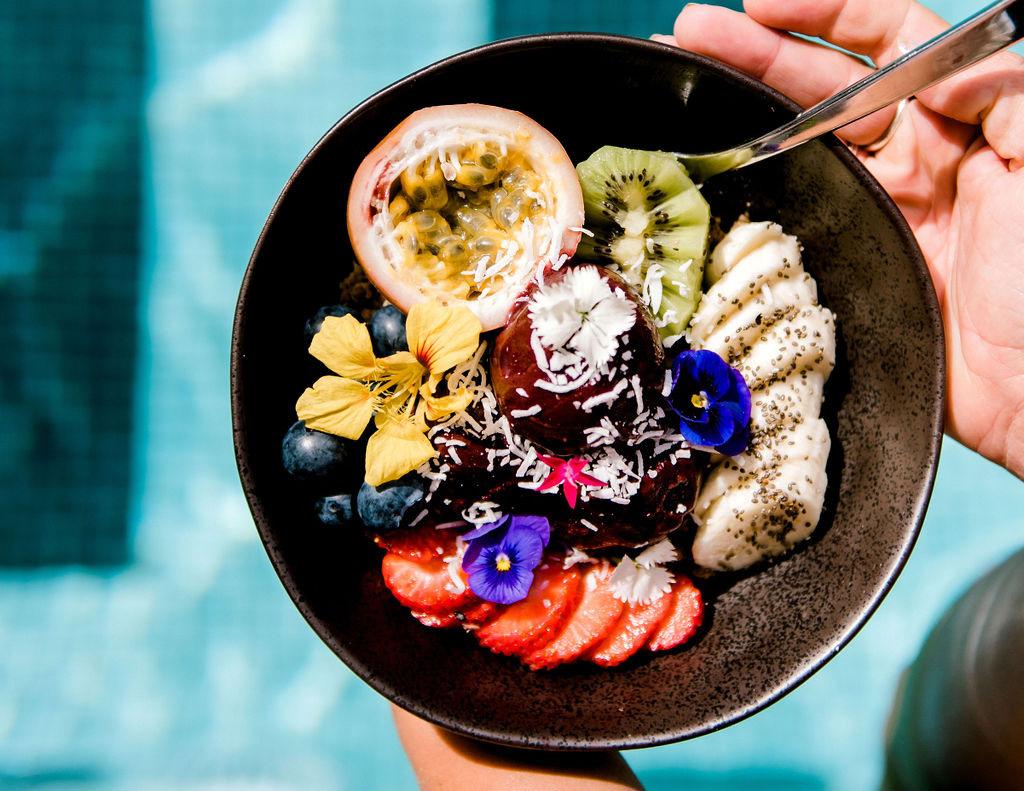
42 | Hospitality FEATURE // Poolside dining
“A pool menu is always fun to work on as it gives chefs the chance to showcase their ideas.”
– Greg Benney
The Smart Oil Solution

Cookers is Australia’s leading bulk cooking oil supplier focused on bringing efficiency and sustainability to the foodservice industry since 2000.



With a customer-first approach, we provide high quality cooking oils and a complete system to streamline the entire process of oil management. From supply and delivery of fresh cooking oil to the collection and recycling of used cooking oil, you have one direct point of contact.

Discover what Cookers can do for you P:
No Lock-in Contracts Sustainable Solutions Equipment Free on Loan Scheduled Delivery & Collection cookers.com.au
1300 88 22 99
At the forefront of outfitting since 2002
Modern uniforms that elevate a customer experience.
CARGO CREW HAVE long understood the intrinsic link between hospitality, quality service, and a modern uniform delivering a memorable customer experience.
HOSPITALITY LEADERS SUMMIT Partner
21 years on and Cargo Crew are still at the forefront of delivering modern designs that provide functional performance that unites teams and enhances a venue’s aesthetic. Cargo Crew are committed to creating products that work harder and deliver more.
“While we continue to create considered uniform designs that meet our clients’ needs, we also have a firm focus on research and development to deliver sustainable uniform solutions that are created for good,” says Felicity Rodgers, founder and creative director of Cargo Crew.
The latest addition to the Cargo Crew apron range is the Harry bib apron, which
is made using post-consumer plastic waste. In fact, each Harry apron contains at least four recycled bottles, so they are not only built to last, but your team knows you’re making a better uniform choice for the planet.
Consumers and staff are becoming more conscience of fast fashion and poor-quality garments. Uniforms are put through their paces every day, so it’s essential they are designed to last and are well tested to ensure they’re fit for purpose.
Hospitality venues know the power of a uniform in not only uniting a team and making them easily identifiable, but the impact a smart uniform has on the customer. A modern uniform sets the tone of a venue from welcome to, “Check please!”. Chat to the team at Cargo Crew and elevate your venue. ■ cargocrew.com.au

44 | Hospitality ADVERTORIAL //
Cargo Crew
Trend Report
A must-read hospitality trend report with insights from the best in the business. Stay ahead of the game, from interiors, colour forecasting, menu curation and team outfitting right through to going green & sustainable practices.

cargocrew.com.au +61 3 9411 9850 KEEP AHEAD OF THE EVOLVING TRENDS IN THE HOSPITALITY INDUSTRY:
Download
your free report today!
HOSPITALITY DOWNLOAD NOW!

Crêpes Suzette
The classic French dish has stood the test of time on dessert menus.
WORDS Amy Northcott
PHOTOGRAPHY David Li for Gavroche
WHEN IT COMES to French desserts, crêpes Suzette is a dish that has cemented its place as a classic, combining a methodical cooking process with a sublime flavour combination and all-round elegance on the plate. Unlike crème brûlée or crème caramel, crêpes Suzette sits on the fruitier end of the sweet scale thanks to its citrus-forward profile. But crêpes Suzette is perhaps most recognisable by its theatrical presentation. The dish is laced with liquor and set alight at the table, resulting in a memorable finish to a dining experience.
Hospitality speaks to Batiste Gouraud, head chef at Gavroche, and Markus Andrew, executive pastry chef at Bistro Nido, about the process behind making the dessert, the importance of balance, and how they’re introducing modern hints to the staple.

There are a few origin stories when it comes to the starting point of crêpes Suzette. The most common is the accidental creation of the dish by Henri Charpentier who served the Prince of Wales at Monte Carlo’s Café de Paris in 1895. Charpentier recounts the moment in his autobiography Life A La Henri — Being The Memories of Henri Charpentier: “It was quite by accident as I worked in front of a chafing dish that the cordials caught fire,” the recount reads. “I thought it was ruined. I tasted it. It was, I thought, the most delicious medley of sweet flavours I had ever tasted.”
The story continues with the Prince of Wales naming the dish crêpes Suzette after the lady he was dining with. Larousse Gastronomique disputes the story and attests Charpentier would’ve been too young to be serving the Prince of Wales. However, the book agrees he popularised the
flambéed element of the dish. Another account says it was named after Princess Suzette de Carignan, who requested it for French King Louis XV. Others believe it was created by a German chef at Restaurant Marivaux who made it for French actress Suzanne ‘Suzette’ Reichenburg who played a maid that served crêpes in a play performed at the Comédie-Française.
While the origins of the dish are disputed, the dish has long been a mainstay at French restaurants and beyond — Gavroche in Sydney’s Chippendale is one of them. “Crêpes Suzette is a deceptively simple dessert that requires a certain level of skill to master,” says Head Chef Batiste Gouraud who grew up in Bretagne, France. Gavroche’s menu pays homage to French bistros, which means crêpes Suzette is a natural fit. “Our menu is designed around traditional French cuisine, so crêpes Suzette made sense to include as it’s one of the most prestigious French desserts.”
Crêpes Suzette is composed of three elements: crêpes, orange sauce, and alcohol
Bistro Nido’s take on crêpes
Suzette uses mandarin
Gavroche has the option to add house-made vanilla ice cream
Grand Marnier or Curaçao is usually the alcohol of choice to flambé the dish
July 2023 | 47
FEATURE // Crêpes
Suzette
Markus Andrew is a classically trained pastry chef who studied at Le Cordon Bleu before going on to lecture at the culinary school. Crêpes Suzette is one of the dishes he has taught pupils. “The students loved the learning experience of flambéing crêpes Suzette during the afternoon tea lesson,” he says. It’s also been served at Devon Hospitality Group’s Devon Café in Jakarta, and is on the menu at its latest venue Bistro Nido in Sydney’s Regent Place. But Andrew is putting a twist on the classic recipe in line with the menu’s French–Japanese approach. “The Bistro Nido version of crêpes Suzette is made with the concept of respecting tradition with Japanese sensibility in mind,” says Andrew. “I have maintained the traditional method and I believe a good dish must be rooted in the classic.”
The traditional crêpes Suzette consists of three elements: crêpes, orange sauce, and flambéed alcohol. The process begins with the crêpe. For the batter, Gouraud starts with mixing flour, sugar, and eggs before adding in milk and combining until smooth. Melted butter is added to the batter before it’s left to rest in the fridge for at least six hours. “The wheat proteins that make up gluten combine as they swell while the batter rests,” says Gouraud. “It [makes] the batter light and fluffy, creating a softer final product. Without resting, the batter would be more brittle.”

While the batter rests, it’s time to make the orange sauce, which Gouraud says ties the elements and the flavours of the dish together.
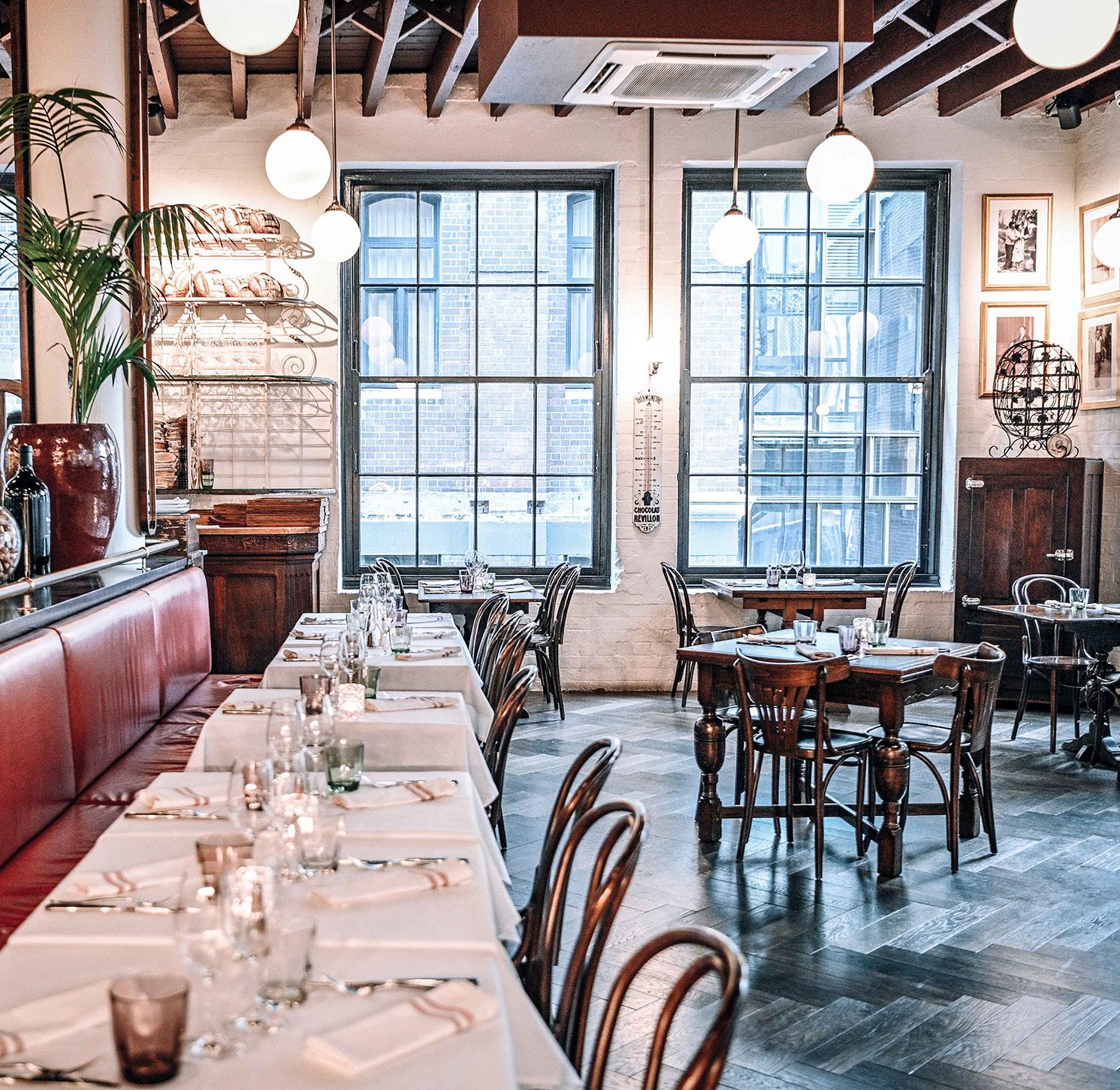
48 | Hospitality FEATURE // Crêpes Suzette
“Crêpes Suzette is a deceptively simple dessert that requires a certain level of skill to master.” – Batiste Gouraud
“The finished sauce is a smooth and syrupy consistency with a velvety texture,” he says. “It enhances the flavour of the crêpes while adding sweetness and tanginess from the orange zest.” To create the sauce, he starts with a dry caramel and caramelises it before adding butter, fresh orange juice, and orange zest. It is then cooked over an extended period to deepen its profile. “It typically takes around 10 minutes to prepare but over an hour to cook as we’re quite meticulous with the flavours,” says Gouraud.
Over at Bistro Nido, the traditional orange is swapped out for a different citrus — mandarin. “Growing up, I visited an orchard and picked mandarins with my family almost every year in Chittering, Western Australia,” says Andrew. “Mandarin contributes more natural sweetness, juiciness, and a unique aroma to the dish.” Mandarin, or unshu mikan, is a popular fruit in Japan, too, which is in line with the venue’s fusion approach.
After the batter has rested and the sauce is completed, the crêpes are cooked. Gouraud says choosing the right pan is vital to achieving an unrivalled crêpe. “The pan should be cast-iron or cast aluminium and needs to be circular for even distribution of heat, so each crêpe is cooked perfectly.” Butter is added to the pan before the batter is poured in and the crêpes are cooked for one minute on each side or until they are “thin, marbled, and light” according to the chef.
Andrew cooks crêpes by adding butter and three tablespoons of batter to a skillet, quickly tilting it to distribute the mixture. The chef cooks the crêpes for around 45 seconds until the edges curl up and start to brown before flipping them with a long spatula. He continues to cook the crêpes for another 10–15 seconds until brown spots appear across the bottom.
Once cooked, two crêpes are folded and covered with the heated sauce and garnished with fresh orange and citrus zest. The final element of crêpes Suzette is the addition of alcohol which plays a vital role in flavour, but also in the theatrical serving of the dish. Traditionally, the French Cognac Grand Marnier or orange-flavoured liqueur Curaçao is used. Gouraud and Andrew both prefer Grand Marnier. “We finish the sauce with Grand Marnier to add a subtle depth and warmth so it’s sweet and strong with a zesty orange flavour,” says Gouraud. The dish is then flambéed tableside for guests, where the alcohol is set on fire with a lighter and remains lit for a short time before it extinguishes.
Gouraud’s menu also offers guests the option to order housemade vanilla ice cream on the side which he says is a common but not so traditional addition. “Some people also like to add Chantilly, depending on their taste preference,” says the chef. “Personally, I love the combination of the two elements and find the creaminess of the ice cream a nice way to contrast the flavours of the crêpes and sauce.”
Bistro Nido serves crêpes Suzette with a similar tableside flambé experience. Mascarpone cream is also served with the dish for an extra layer of complexity. “I wanted to add more texture and richness and balance it out with the acidity and freshness of the sauce and the fruit,” says Andrew.
Crêpes Suzette is a showcase of French artistry when it comes to the creation of classic desserts. It also brings a sense of entertainment and tradition to the dining experience for guests. For Andrew, the traditional element, along with the flavour profile, is why he enjoys serving the dish. “I like how it retains the classical flavour of crêpes Suzette with the freshness of the citrus fruit served with the old charm gueridon,” he says.
Gouraud also sees an element of nostalgia in the dish and believes it’s a great way to end a dining experience. “It reminds me of my grandma who used to make crêpes Suzette back home in France,” he says. “It’s also a great way to finish your meal and helps enhance the experience for the customer as they get to see it flambéed in front of them.” ■

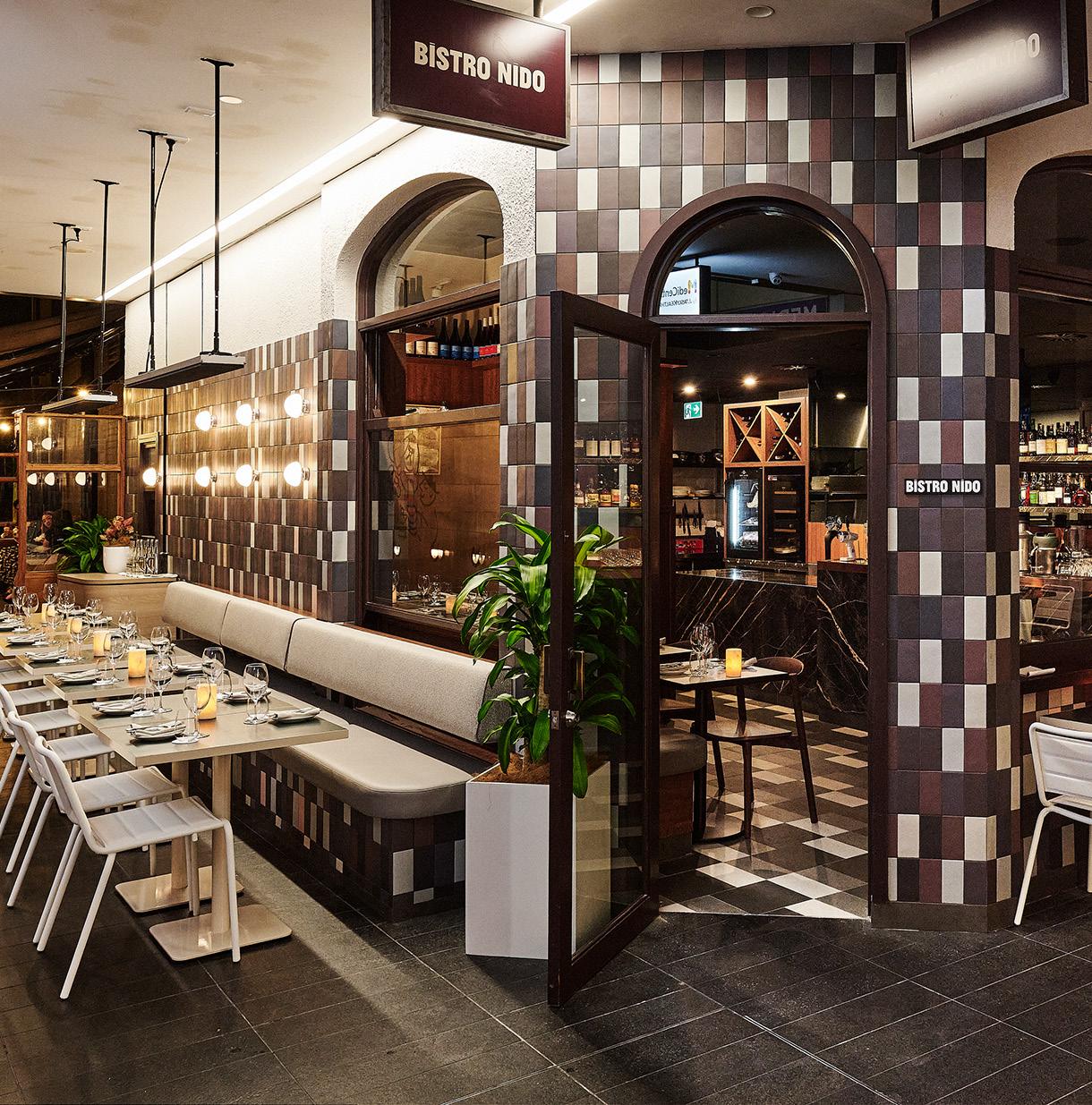
July 2023 | 49
FEATURE //
Crêpes Suzette
Going green
How to make your restaurant seriously sustainable.
IN AN ERA where environmental concerns are top of the checklist, the restaurant industry has a significant role to play in promoting sustainability. By adopting eco-friendly practices, chefs and restaurant owners can not only reduce their carbon footprint but also attract a growing customer base who are seeking ethical dining options. It all starts with an action plan, so here’s some actionable strategies to make your restaurant more sustainable.
Embrace plant-based goodness
HOSPITALITY LEADERS SUMMIT Partner
Water-wise practices: be a water-saving hero! Install water-saving fixtures and toilets to conserve water without compromising functionality. Fix leaks promptly and consider implementing water reuse systems for non-potable purposes. Educate your staff on the importance of water conservation and encourage your customers to join the effort by serving water upon request. Small actions can make a big difference.
Get on board with the plant-based revolution and offer your customers some incredible meat alternatives. Not only do these options reduce carbon emissions, but they also cater to the growing crowd of health-conscious and eco-friendly diners. Get creative with plant-based burgers, mince, and more, and watch your customers choose sustainable options without having to compromise on taste.
Waste warriors: fight food waste like a champ
Control portion sizes, manage your inventory efficiently, and train your staff to minimise waste. When unavoidable waste does happen, partner up with composting facilities or food banks to ensure it goes to good use. Together, we can make a dent in reducing food waste and create a more sustainable food system.
Energy efficiency: save energy and save the planet
Invest in energy-efficient appliances such as LED lights and energy star-rated equipment, to reduce electricity consumption. Remind your staff to turn off lights and equipment when not in use. Want to take it a step further? Explore renewable energy options such as solar panels. By doing so, you’ll not only cut down on costs but showcase your commitment to sustainability.
Sustainable menu delights: let your menu do the talking Highlight your sustainable options with clear and appetising descriptions. Showcase your plant-based choices and locally sourced ingredients, giving your customers a taste of the community’s flavours or chance to try something new. Educate them about the positive impact of their food choices and keep your menu fresh by featuring seasonal delights. A sustainable menu not only satisfies tastebuds but also tells a story of conscious dining.
With these practical tips in your arsenal, it’s time to take your restaurant’s sustainability to the next level. By embracing plantbased alternatives, minimising waste, conserving energy and water, and showcasing sustainability on your menu, you’ll make a real impact on the environment and inspire others to follow suit. Get ready to elevate your restaurant’s sustainability and show the world responsible dining can be both delicious and rewarding.
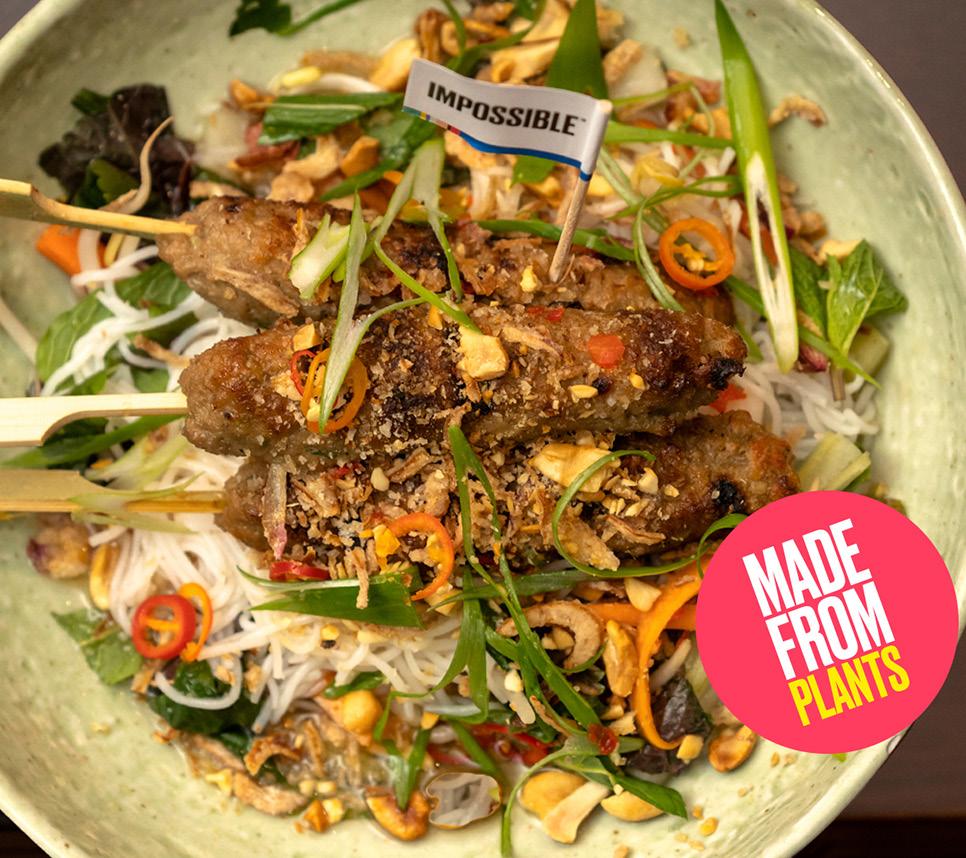
Ready to take your sustainability game to the next level? Impossible™ Foods offers a range of mouthwatering plant-based meat alternatives that taste and cook just like the real deal. Get in touch today to learn more about how Impossible Foods fit on your menu and impress your customers with its incredible taste and environmental benefits. Join the movement and be a part of the future of sustainable dining. ■
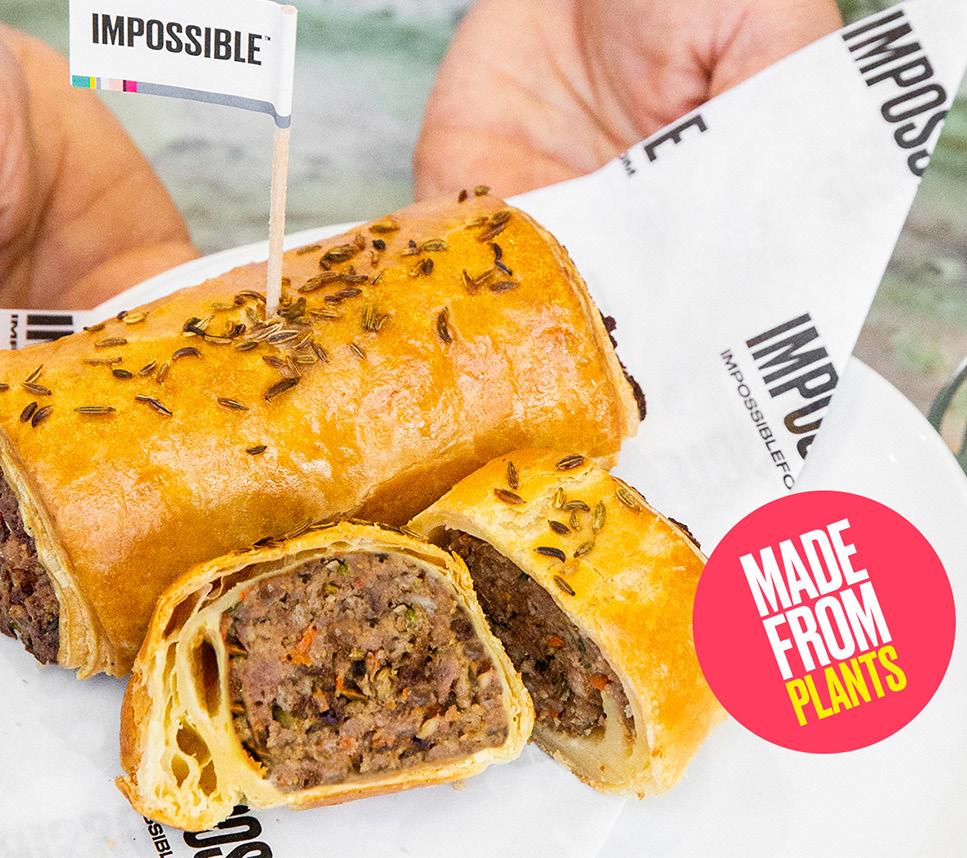
50 | Hospitality
ADVERTORIAL // Impossible Foods
MEAT MADE FROM PLANTS
Impossible Foods is now available in Australia. Scan to get a complementary sample today!

Impossible™ Beef Mince
Impossible™ Beef Patties
Impossible™ Pork Mince
Impossible™ Chicken Nuggets
TRY IT FOR YOURSELF! IMPOSSIBLEFOODS.COM
M a d e From Impossible™ChickenNuggets
Beef MadeFromImpossible™Pork
MadeFromImpossible™
.
All about the bun
THE BURGER MARKET in Australia has seen tremendous growth over the last few years and the number of outlets adding burgers to their menus is increasing. In line with this extra demand, Tip Top Foodservice has expanded its burger bun range to include on-trend burger buns that can elevate your menu offerings. While there are a huge number of buns available to the foodservice market, not every bun is fitted to every build. There is nothing worse than a burger that falls apart in your hands or a bun that overpowers the flavour of the fillings. So read on for the ultimate guide, set to make sure that every burger is matched with its perfect bun.
When you need something vegan …
Many chefs are surprised when they find out the Tip Top potato bun is completely vegan. This is a perfect choice for venues targeting vegans and vegetarians, but also a premium bun that suits modern and upmarket burger builds. It has got a slightly savoury note — there potato flakes in there so it complements a wide range of tastes.
When you’ve got a spicy burger planned … When you’re planning spicy or juicy fillings, you need a burger that has a delicate flavour profile. The soothing texture and taste of the Tip Top milk

bun is a go-to for burgers with pulled pork or spicy chicken. It’s also a popular bun for breakfast burgers such as bacon and egg rolls.
When you’re going for the American-style burger … Super-saucy builds including American style BBQ brisket need a robust bun. But you also need to consider the flavour. A sweet, buttery option such as the Tip Top brioche bun complements Americanstyle builds perfectly. If you’re looking to dip your toe into the water of premium burgers, it is a great starting point as it is super versatile and a real crowd favourite.
When you want a classic and timeless hamburger … You need something with a simple flavour profile that does not compete with the other flavours in your burger. The Tip Top hamburger bun is your go-to, one of the best sellers in mainstream markets for chefs who want to make a good oldfashioned burger with ‘the lot’.
When you want something a bit different, but still classic … If you’re looking to lift the profile of your burger menu and create a point of difference that isn’t going to upset your loyal customers, why not try the Tip Top damper bun? Still a classic, simple bun but it has a dusting of flour and a softer texture that suits large builds perfectly.
Tip Top Foodservice’s buns are designed to give venues the flexibility to offer a range of different carriers for each burger build. They are also pre-sliced to save chefs time in the kitchen. The Tip Top burger range is available nationally through foodservice distributors or direct delivery for customers with an account. ■
52 | Hospitality ADVERTORIAL // Tip Top
It’s the bun that makes the burger.
The Tip Top burger range includes: 4.5” potato bun 4.5” brioche-style bun 4.5” milk bun 5” damper bun 5” hamburger bun See the full Tip Top burger range at tiptop-foodservice.com.au HOSPITALITY LEADERS SUMMIT Partner
CREATING GREAT FOOD TOGETHER
Classic, quality baked goods including sliced loaves, burger buns and breakfast breads.



Premium rustic high top loaves that capture the spirit of the village bakery.
A range of rolls and loaves that can be thawed or flash-baked for that just-baked aroma.
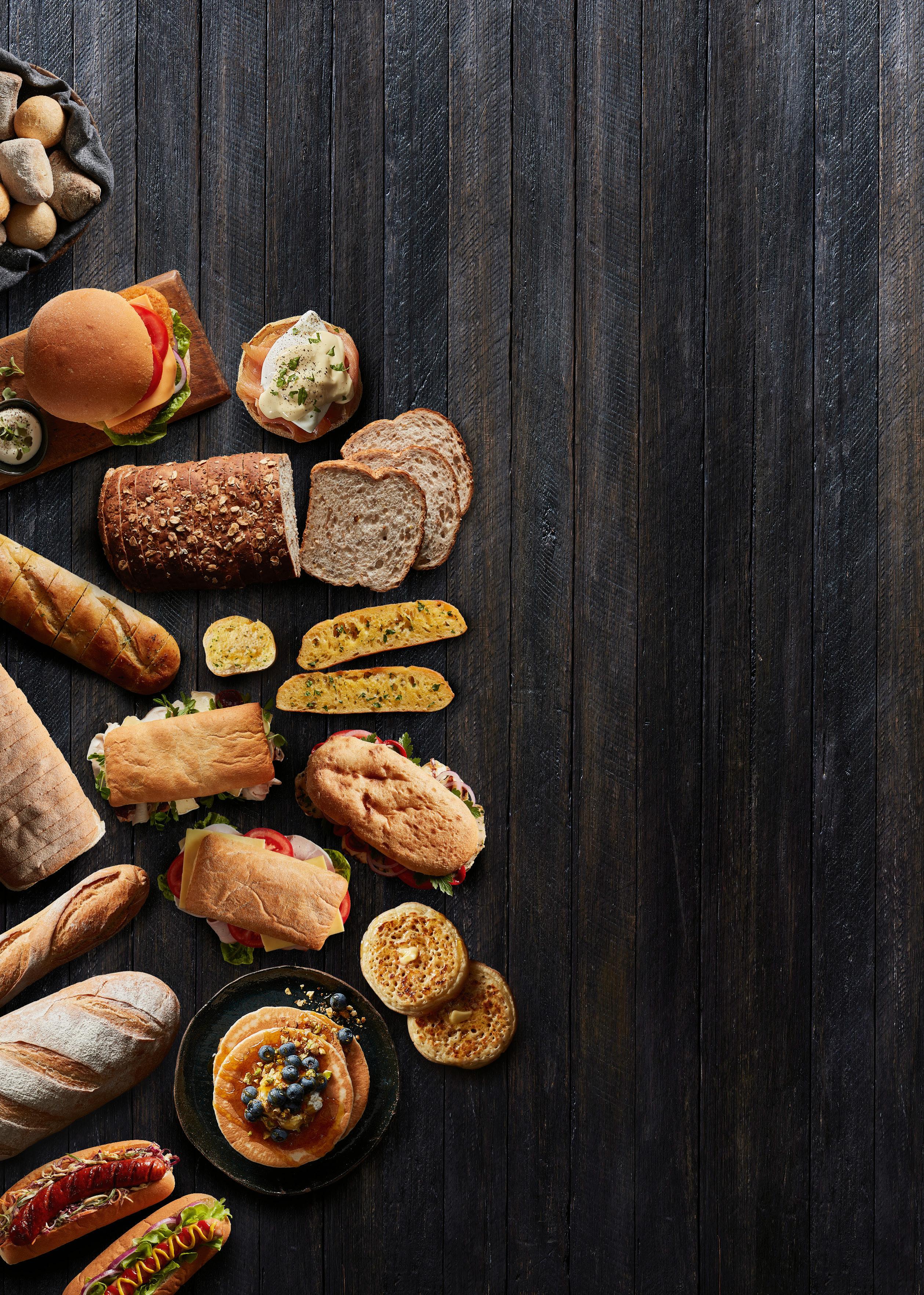
Authentic, great tasting and quick to serve garlic breads, perfect for pairing with pasta and pizza.
Wholesome loaves developed with nutritionists for health and wellbeing.
A breakfast and snacks range enjoyed for generations, including crumpets and pancakes.
TIPTOP-FOODSERVICE.COM.AU © Registered trade marks of George Weston Foods Limited. All rights reserved.
YOUR BAKERY PARTNER



FEATURE // Late-night menus 54 | Hospitality
Night owls
Hospitality speaks to three venues offering food options after dark.
WORDS Amy Northcott
PHOTOGRAPHY Nikki To for Mumu, Dexter Kim for Rekōdo, and Jo McGann for Gimlet
WE’VE ALL BEEN in a position where you lose track of time and the food options dwindle — if not completely disappear. But more venues are catering to those looking for a meal as the clock strikes midnight. In Sydney, Merivale’s Mumu has launched a late-night menu serving up a combination of tasty, familiar eats and options from its usual South-East Asian-influenced offering. Rekōdo at Barangaroo House has also opted for a late-night, snack-style offering for guests to order from during live music sets. And down in Melbourne, Gimlet has always run a supper menu since opening. Hospitality speaks to Mumu Head Chef Oliver Hua, Barangaroo House General Manager Phoebe Barter, and Gimlet Venue Manager Shane Lazzo to find out what’s on the menu and why more venues should consider cooking well into the evening.
Mumu
Merivale’s South-East Asian street-food eatery Mumu launched a late-night menu a few months ago. Led by Head Chef Oliver Hua, the menu continues the fun, vibrant offering of the venue. “We wanted to extend our offering and give people a venue they can go to late at night to have a bit of fun, have a drink, and enjoy some delicious food,” says the chef. The menu runs from midnight until late on Thursday, Friday, and Saturday evenings, often finishing up around the 2am mark. For Hua and his team, the menu is about offering dishes that deliver on flavour. “People at that time are looking for
something familiar rather than something new,” he says. “Sometimes we put nasi goreng on and people don’t know what that is … so we try to do a combination of things that are familiar.”
Mumu’s late-night menu features a few staple dishes from the restaurant’s standard menu alongside late-night classics with a SouthEast Asian twist. “It’s bits and bobs from the actual menu, but then we have our Mumu fried chicken sandwich which is essentially a fried chicken burger done like Taiwanese-style chicken.” There are also waffle fries with chilli mayonnaise, fried chicken wings with curry butter, and other more traditional dishes. “We have our classics such as fried egg noodles. We also do a selection of sambal which is a play on chips and dip.”
Working late at night isn’t for everyone, but Hua says it hasn’t been an issue for the team at Mumu. “I wouldn’t say we struggled to find staff,” he says. “Finding people who were willing to do those shifts wasn’t that hard … there are people who go to school or university in the daytime and can only work at night, which they prefer. It’s about offering them a schedule that works best for them.”
The restaurant has had a positive reception to the late-night menu, which has the added bonus of seeing fellow hospo workers drop in. “What we’re finding is there are five, six different restaurants for late night and everyone knows each other and mingles,” says Hua. “It is really good to see the hospitality crowd come in after
Rekō do was inspired by the restaurantturnednightclub scene in New York
Mumu’s menu features a Taiwanesestyle fried chicken sandwich
Gimlet’s much-loved cheeseburger features on the late-night menu
Rekō do has live DJs who take over the restaurant floor

July 2023 | 55 FEATURE // Late-night menus
service, enjoy a drink, have food, and meet new people.” The community aspect is at the core of the late-night offering for Hua and his team. “I think that’s what it’s all about, whether it’s hospitality or not,” he says. “It’s about bringing people together at all times of the day.”
Hua admits he’s always updating the menu as he learns more about what diners are looking for at that time. “As the late-night market expands, I think we need to expand with it,” he says. “We’re never going to stop developing the menu and giving people what they want.” The chef also hopes more venues will consider launching late-night food options moving ahead. “Having a lot of industry people go to late-night venues encourages them to bring it back to their venues and hopefully inspires them to do something.”
Rekōdo
Rekōdo in Barangaroo House has also ushered in a latenight option to pair with its live music roster. General Manager Phoebe Barter says the inspiration came from the restaurant scene in New York. “It’s quite common to see restaurants flip into bars and dancefloors in New York but not so much in Sydney,” she says. “We wanted to bring this experience to Sydney and offer something different to our guests.”

The late-night menu is available from 10pm until midnight on Friday and Saturday nights and consists of snack-style dishes. Options include Sydney Rock oysters, edamame, prawn gyoza with kimchi, pork belly bao, shoestring fries, and a selection of market sashimi. “The menu is a condensed version of our snack menu and it’s all the things you can just pick up with your fingers — no fuss and all fun,” says Barter. Along with the food menu, the venue also transforms for the night, with tables moved to create a dancefloor and encourage patrons to let their hair down. “Guests can order their own way at the bar, have a boogie, or settle in for a chat outside on our balcony with some epic tunes in the background,” says Barter.
The Rekōdo team have had a positive response from patrons since the offering has gone live. “People like the idea of coming in and not being tied to a table or a menu,” says Barter. “It’s a ‘come as you are, enjoy a drink, and dance the night away’ vibe!” She’s also noticed a new market of diners attending the venue, which also encourages those already dining to stay on for the late-night offering. “It allows our dinner guests to not worry about ‘what’s next’ and is also an option for those venturing down to Barangaroo later in the night. The best part is the people in the restaurant watching the room evolve and then getting involved themselves.”
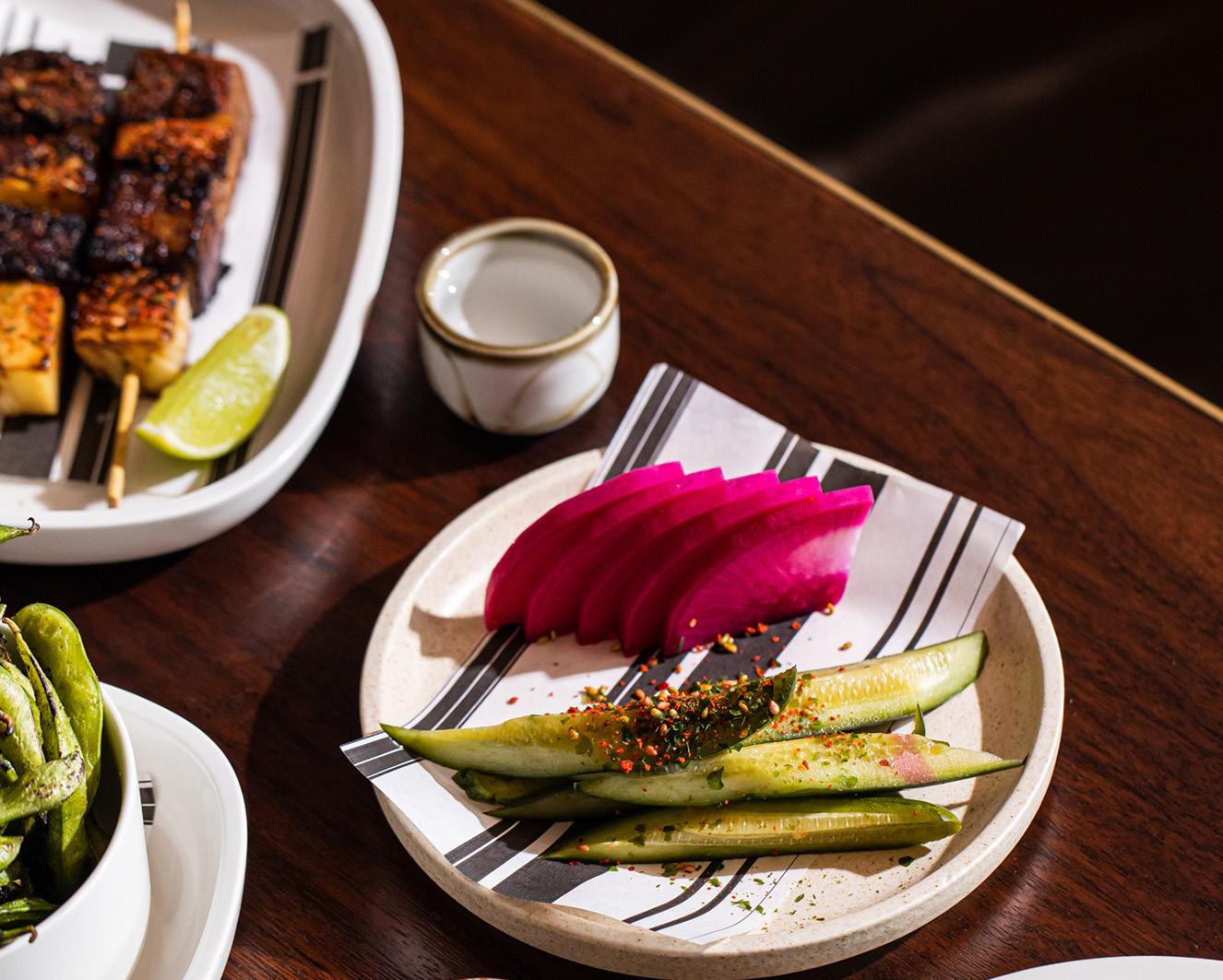

FEATURE // Late-night menus
56 | Hospitality
Gimlet
Since opening on Russell Street in Melbourne’s CBD in 2020, a supper menu has always been part of Gimlet’s offering alongside the usual à la carte and seasonal share-style offering. According to Venue Manager Shane Lazzo, the late-night offering is a nod to Gimlet’s versatility as a restaurant and a bar. “While Gimlet is a restaurant with guests reserving tables to dine, it is also a bar where we love to see our guests spontaneously pop in for a cocktail and a bite to eat,” he says.


The supper menu is available on Friday and Saturday evenings from 10pm until 1am and is designed to cater to a range of occasions and appetites. “It’s a dedicated late-night menu which includes some of the favourites from our lunch and dinner offerings with a few special additions,” says Lazzo. “We’ve really considered what dishes work best for that time of night be it after the theatre or a show or as part of a night out with friends exploring the many great activities available in Melbourne.”

Some of the dishes on the menu include bite-sized items such as oysters, San José saucisson with olives, and the venue’s Gimlet gilda with smoked tuna and pickled mussel. Caviar service is also part of the supper menu, which sees Gimlet’s house caviar and Giaveri Beluga served with traditional accompaniments. For those searching for something larger, there are mains available including the venue’s famed cheeseburger along with pipe rigate with blue
swimmer crab, and a 200g Blackmore Wagyu sirloin with jus gras. To finish, there’s a selection of cheese and desserts. Lazzo believes serving a versatile, late-night menu has complemented Gimlet as a venue and has always been well-received by diners. “Guests seem to appreciate enjoying Gimlet in various forms and we see the same guests dining in different ways depending on the occasion — a long celebratory lunch or a cheeseburger and a martini at the bar — both are equally encouraged!” Lazzo and the team have also noticed it helps bring people to the venue on an impromptu, unplanned basis, too.
The common hope shared by the aforementioned venues is that other operators will look at joining the late-night crusade as the industry moves ahead. “You only have to look at New York City to see how huge it can be — it’s only a matter of time,” says Barter. “Welcome the partying to restaurants. We encourage the industry to think bigger when it comes to restaurants, break the mould for late night, and make it fun.”
“I think it’s the way forward and I really hope other groups follow suit as they grow,” adds Hua. Lazzo agrees venues that stay open late into the night play an important role in a city’s nightlife. “Melbourne has always had some great late-night venues and we think this will continue to be a part of the city’s fabric,” he says. “The city is alive with exhibitions, sport, festivals, comedy shows, and theatre — it just makes sense there are great venues for people to eat and drink at before and after they attend something.” ■
July 2023 | 57 FEATURE // Late-night menus
José Saulog



5 MINUTES WITH ... // José
Saulog
Behind the pass with Parlar, Franca, and Armorica’s executive chef.
58 | Hospitality
MY INTEREST IN hospitality started when my mother took me to a restaurant when I was seven or eight. They made Caesar salad tableside and I had never seen anything like it, I was just amazed. My grandfather also owned and ran a restaurant, so I suppose it’s in my blood.
When I first came to Australia from Vancouver, Canada, I worked at Glass Brasserie, Tetsuya’s Restaurant, and Bells at Killcare. These kinds of venues didn’t really exist where I was from and they opened my eyes to how food and service should be — fun, eclectic, and exciting.
At Glass, I learned you could set a great standard while pushing big covers. The simple yet precise techniques stood out to me the most at Tetsuya’s. You can’t hide anything there — if it’s a millimetre short, it will show. At Bells with Stefano Manfredi, I again learned simplicity is always king. These roles influenced my cooking in the sense of — while it sounds very cliché — letting the ingredients speak for themselves. I learned to keep food simple, tasty, heartwarming, and honest, but to also push it visually as you need to stand out somehow.
I suppose fate led me to Andrew Becher and working across Franca and Parlar. When I came back to Australia after a two-year stint in Germany, I said to myself, ‘No more fine dining and no more working long hours’. The plan was to either join a very well-established restaurant or to try and make a name for myself. After responding to a Seek ad, I interviewed with Andrew and General Manager Alex Cameron and I loved the vision they had — they wanted to be different and so did I. That and the challenge of starting from ground zero is what attracted me to joining their team.
Franca is a French brasserie with strong Mediterranean influences where you can have a three-course meal where sharing isn’t necessary. Parlar is much more intimate and is more on the fine-dining side of service. It’s heavily based on Catalan flavours utilising premium Australian ingredients.
Armorica is our interpretation of a grand brasserie. It’s heavily French-influenced with a large menu for sharing. The aim is for it to be an ‘everyday’ restaurant where you can have
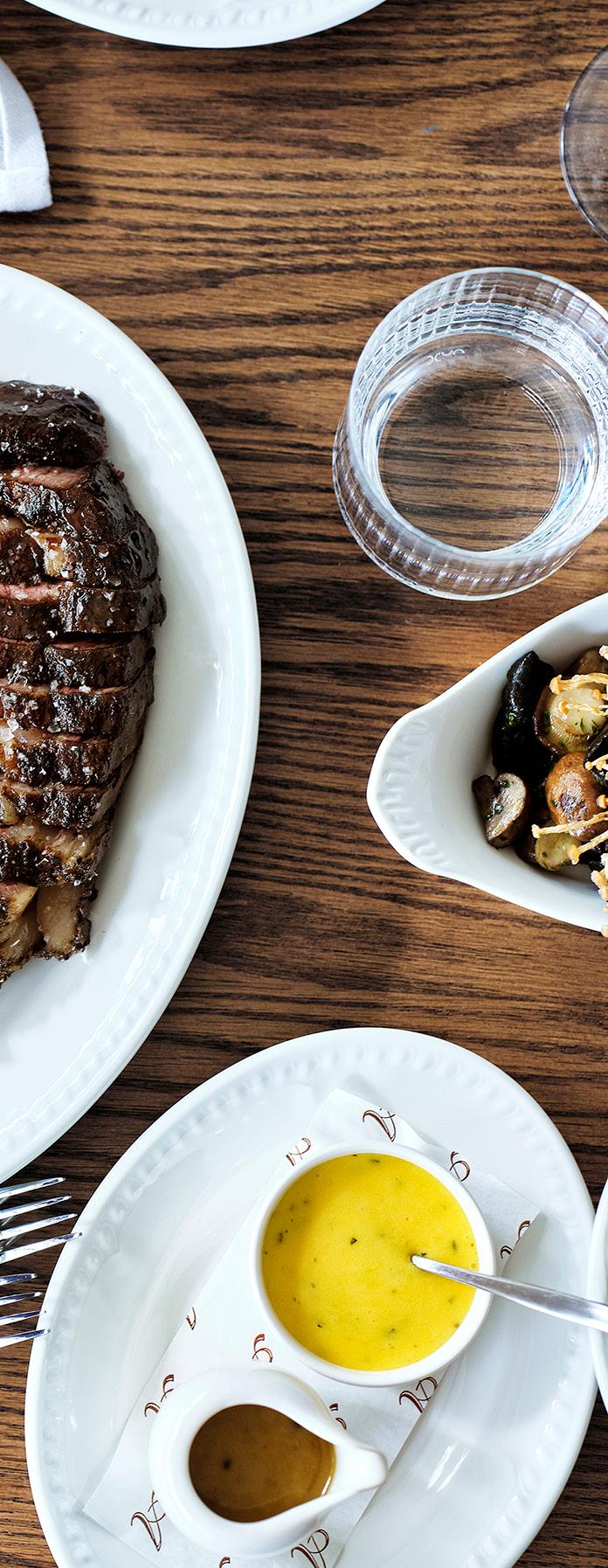

a pasta, enjoy a burger for lunch, have steak frites for dinner, or visit with a big group and have them all.
The most popular dish is the steak frites, and we pride ourselves on using five different cuts of beef. You can have a very nice, entry-level rump cap or treat yourself with a Blackmore Wagyu or a Stone Axe fullblood Wagyu that comes with your choice of béarnaise, mushroom sauce, or bone marrow butter. The crab cakes are also popular. Head Chef Julian Smith and I are both from Canada and we love our crab cakes back home, so it only makes sense for us to serve it. But for me personally, my true favourite is foie gras. Whenever I go to France, I always overindulge on foie gras. It is just quintessential. You will never find foie gras better than in France and having it here is truly special.
I find I am influenced by so much at any given time with my cooking. An idea comes to me, and my next thought is which venue it belongs to. I don’t really force anything, everything must make sense and have purpose with the hope that it translates to our guests. If it doesn’t, it’s back to the drawing board.
I really enjoy the madness that a kitchen — or three — brings. There’s something about feeling like you’re never going to make it for service, but everything works out just fine. However, it is incredibly tough to stay in touch with the day-to-day operations across three venues. Any chef can attest to the fact that a lot can change in an hour, which is why having not only a strong team but one you can trust is important. I am very thankful to my teams across each venue who are always eager to assist in developing new ideas to help the restaurant thrive. We all believe we reflect each other to an extent, and we only have one goal: to do our jobs well.
2023 is very much a work-in-progress for me. My goal is to make Parlar and Armorica well-oiled machines just like their older brother Franca. I want to further nurture our teams and focus on education and growth for all members of the kitchen, plus work on revitalising our menus and pushing on for another successful year. ■
July 2023 | 59 5 MINUTES WITH ... //
José Saulog
Any chef can attest to the fact that a lot can change in an hour, which is why having a strong team is important.
Kitchen Ventilation Solutions

Halton and Stoddart o er the optimum solution in terms of combining:
ENERGY EFFICIENCY
Halton is the world’s leading supplier of commercial kitchen ventilation systems – including commercial kitchen exhaust hoods and ventilated ceilings.
SAFETY AIR PURIFICATION

®



























































 EDITED BY Amy Northcott
EDITED BY Amy Northcott





























































































































































